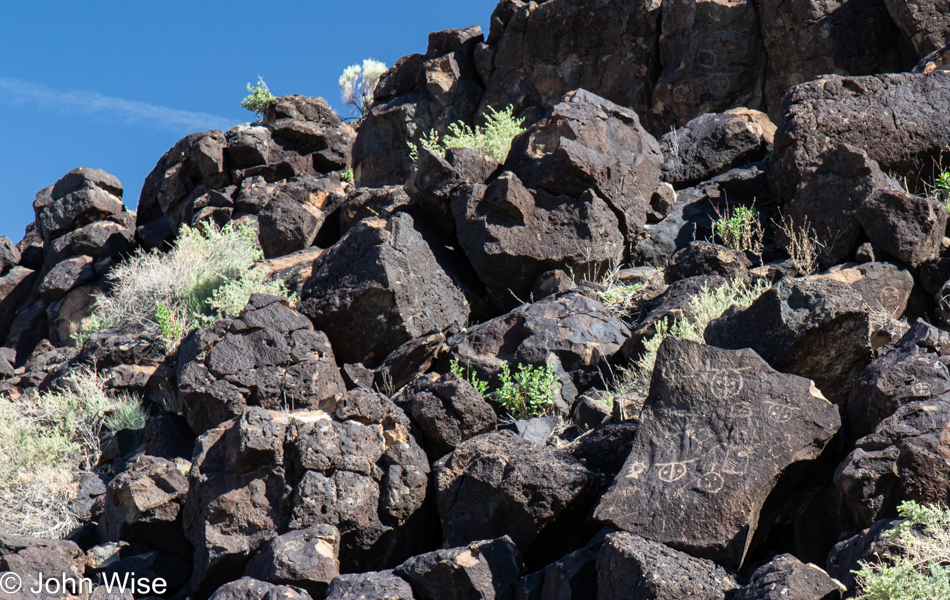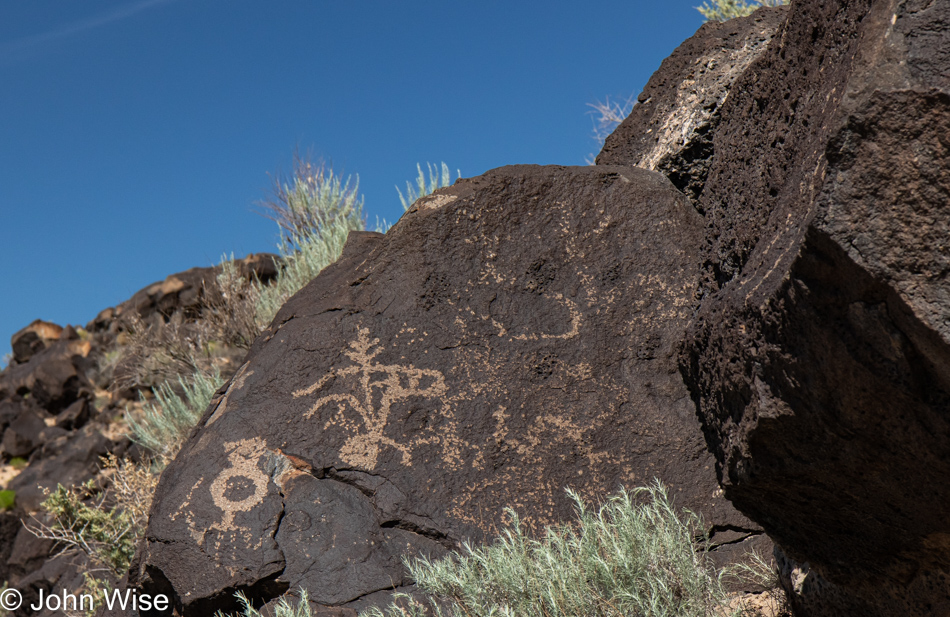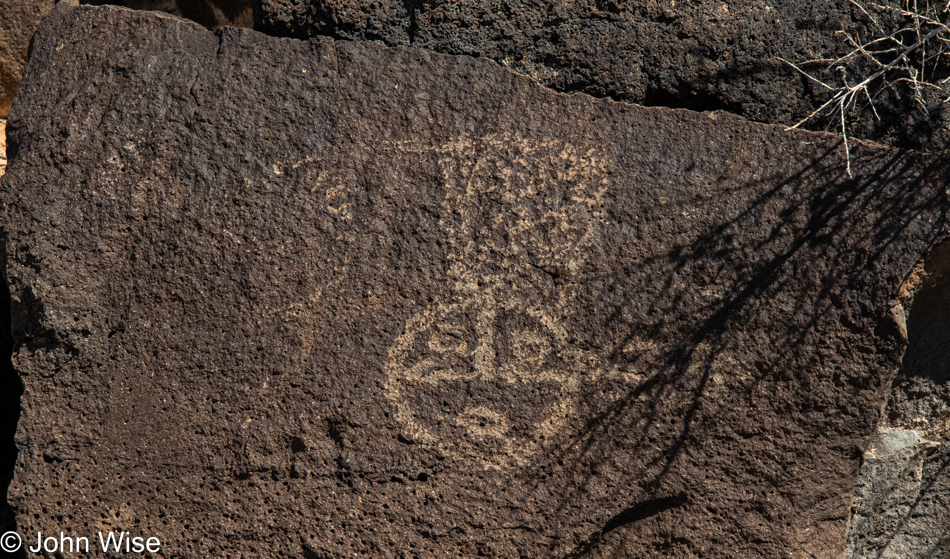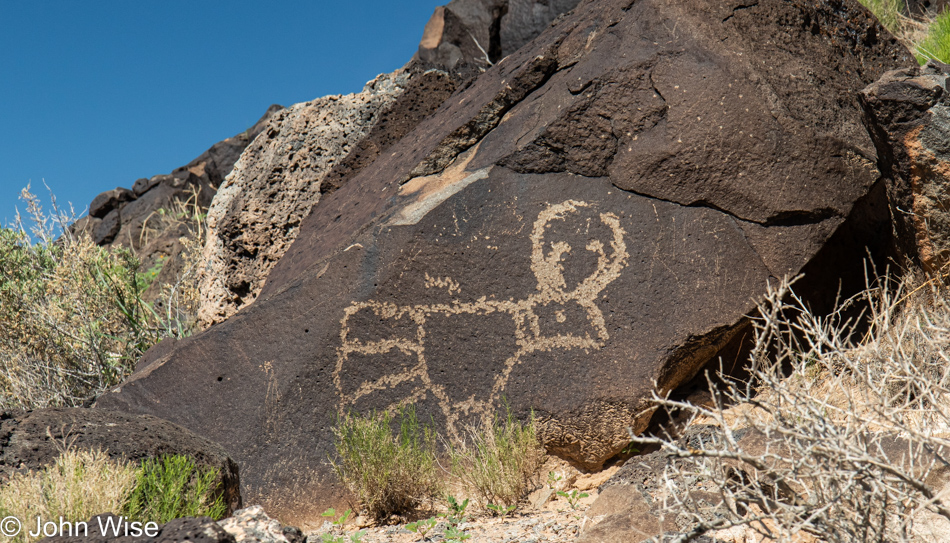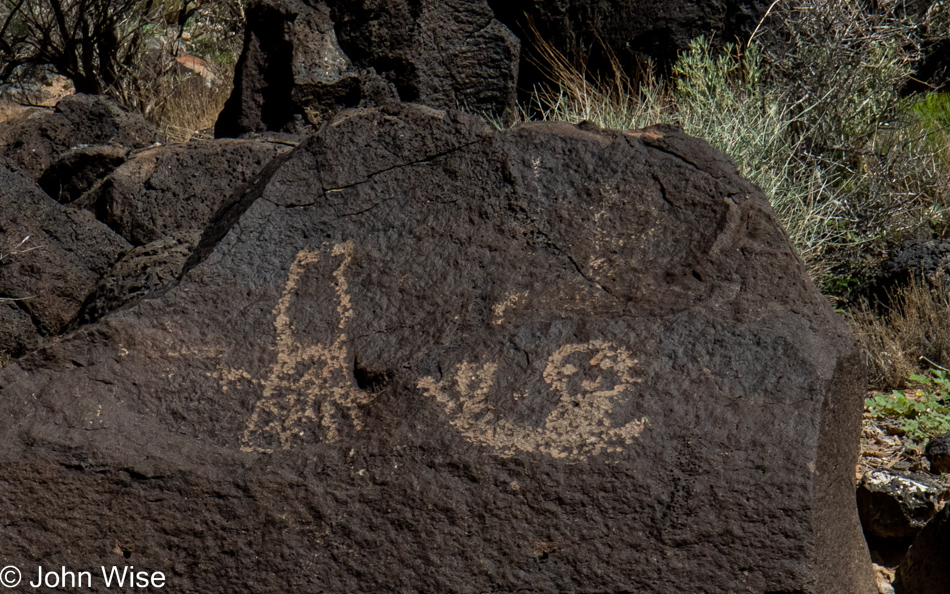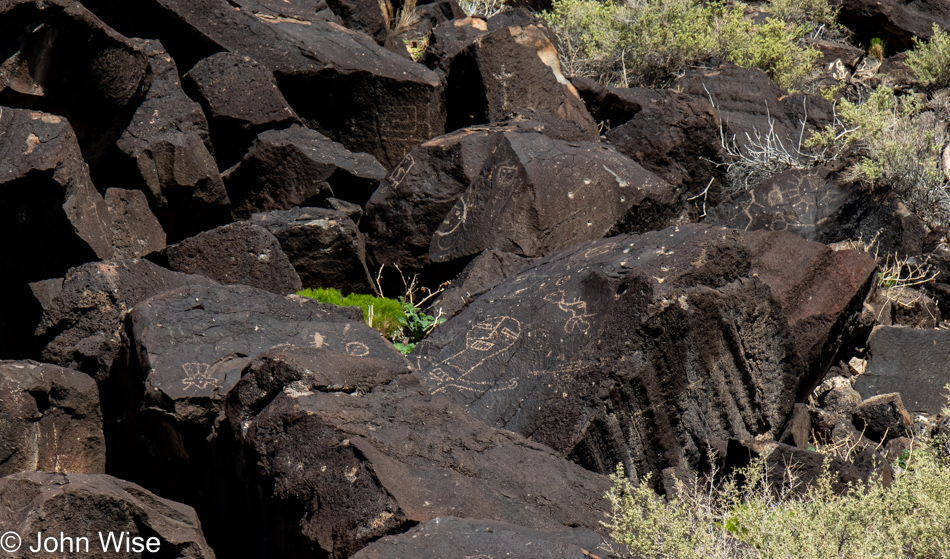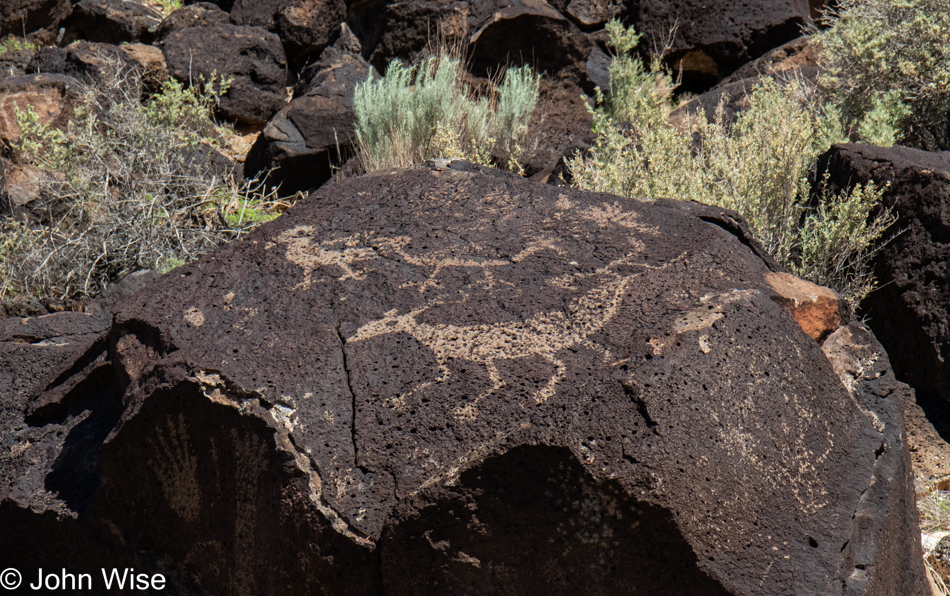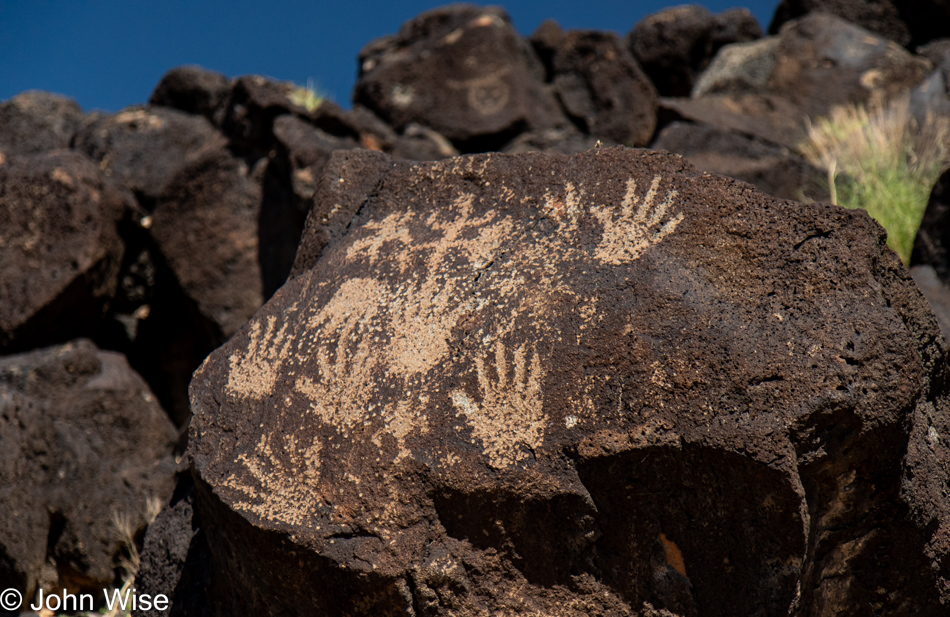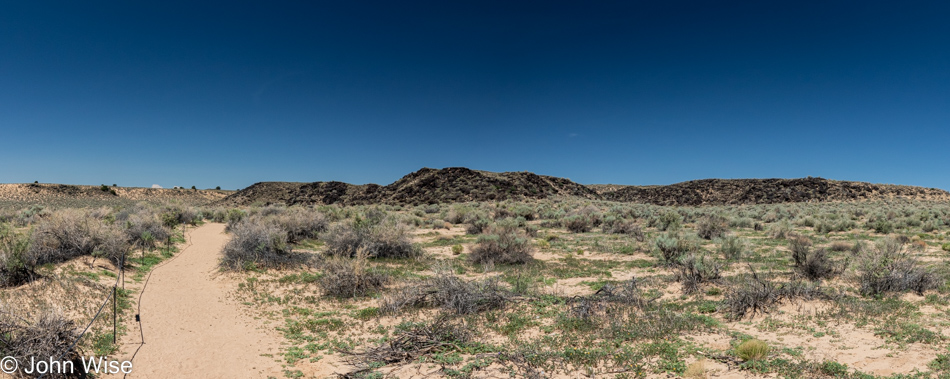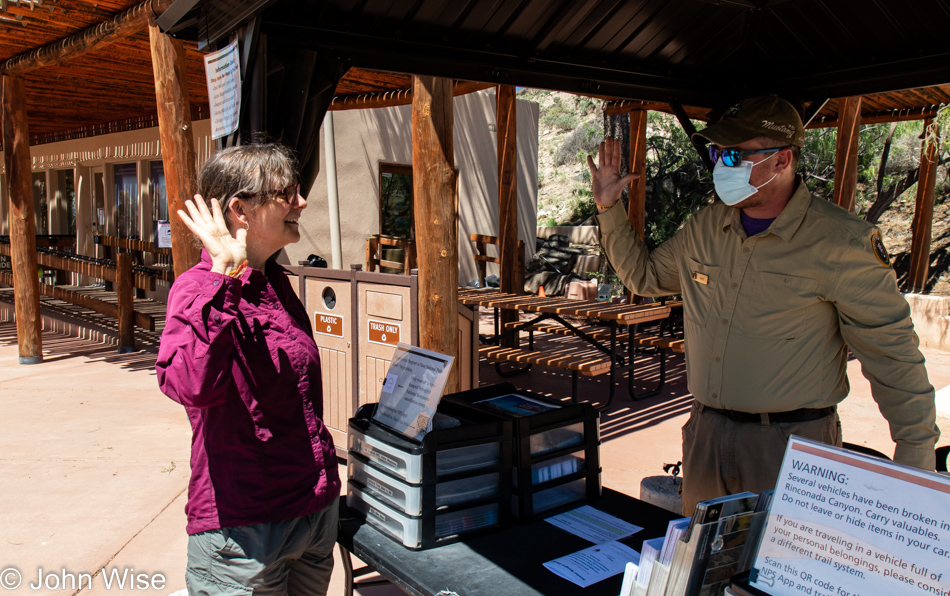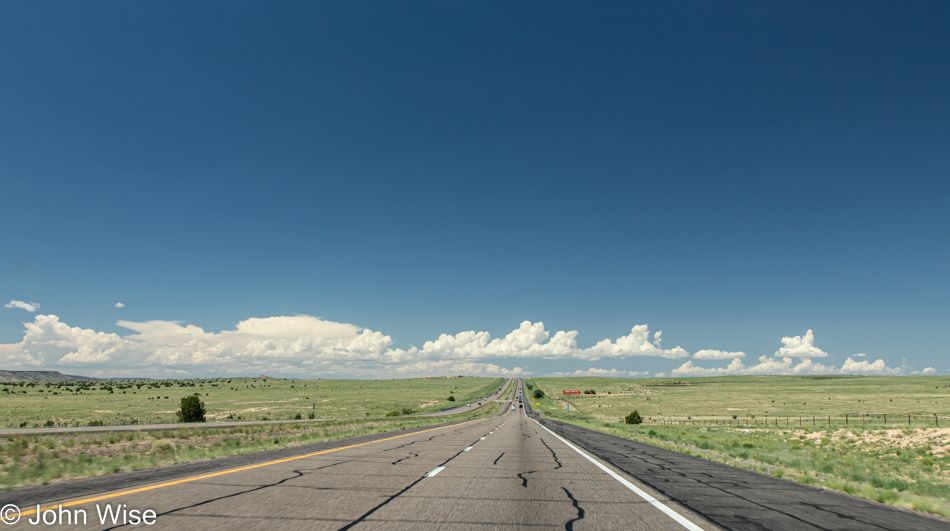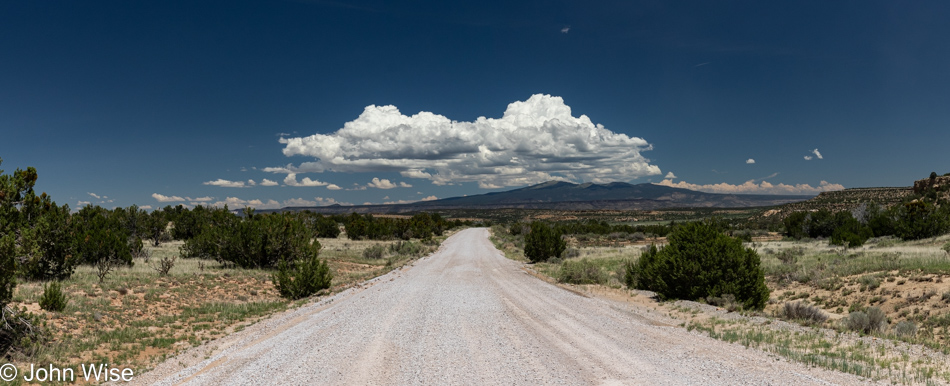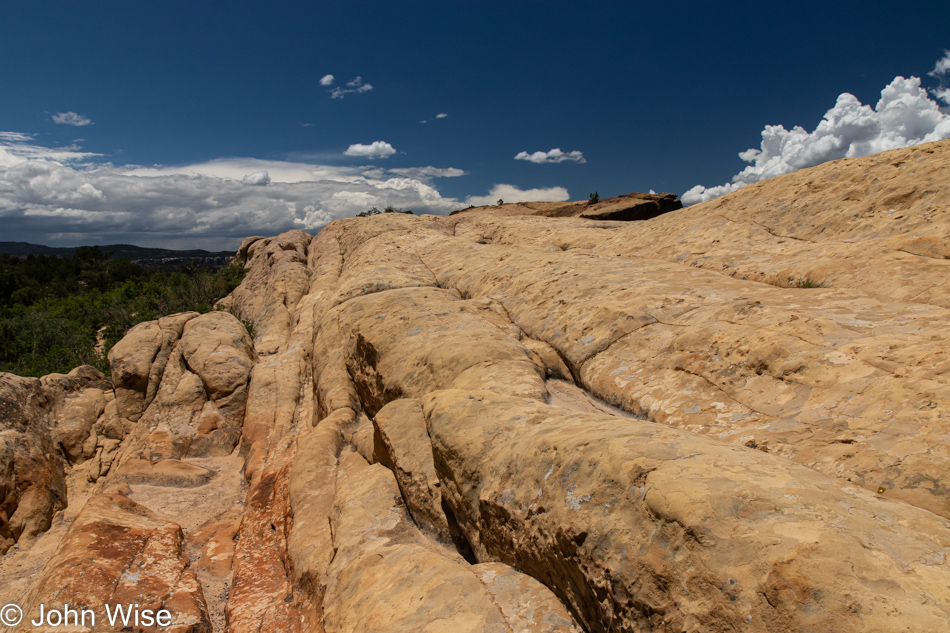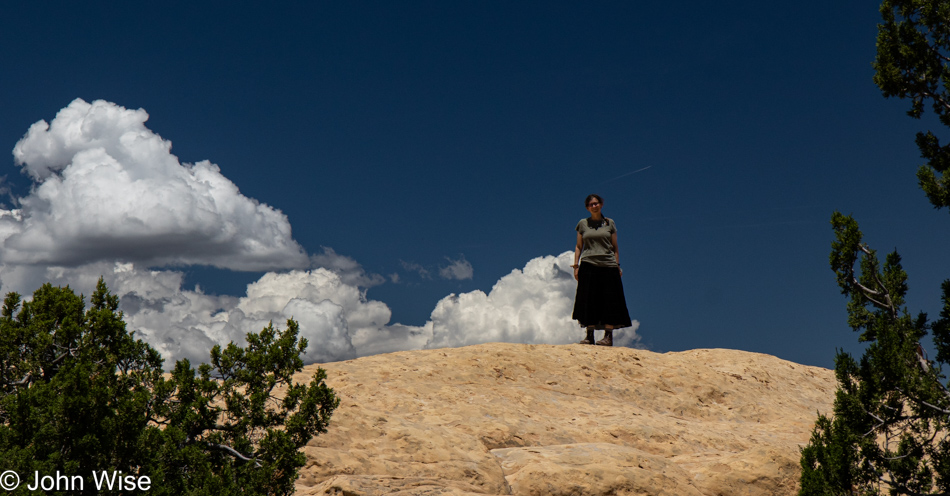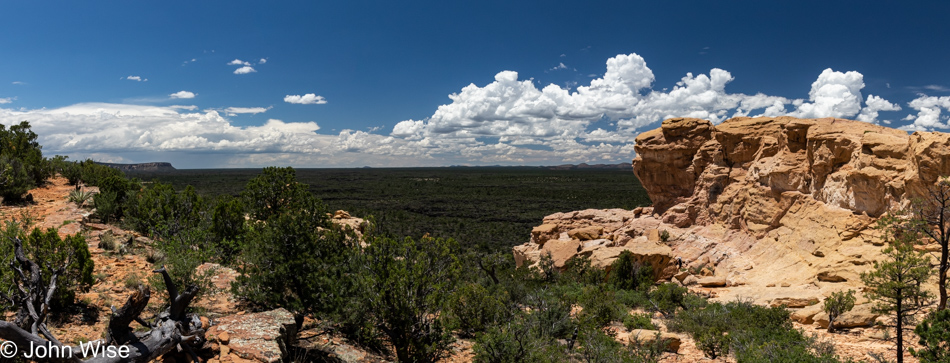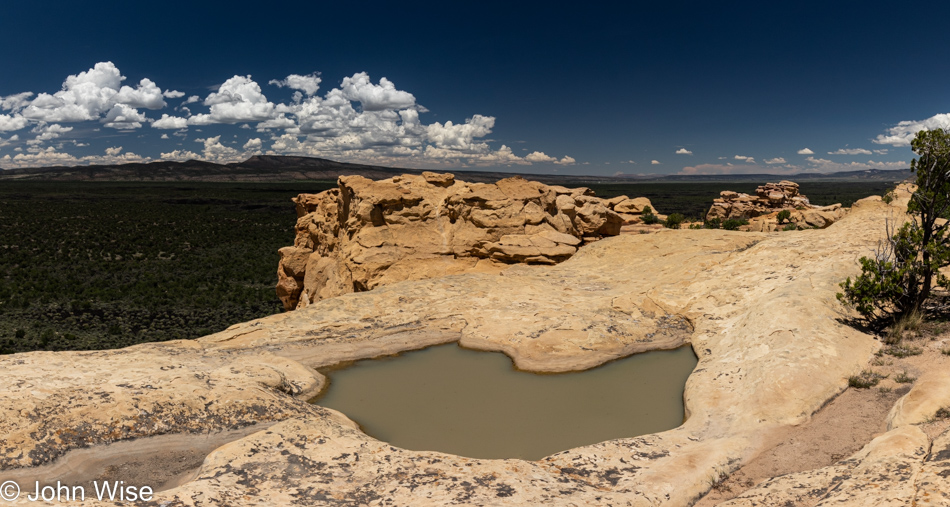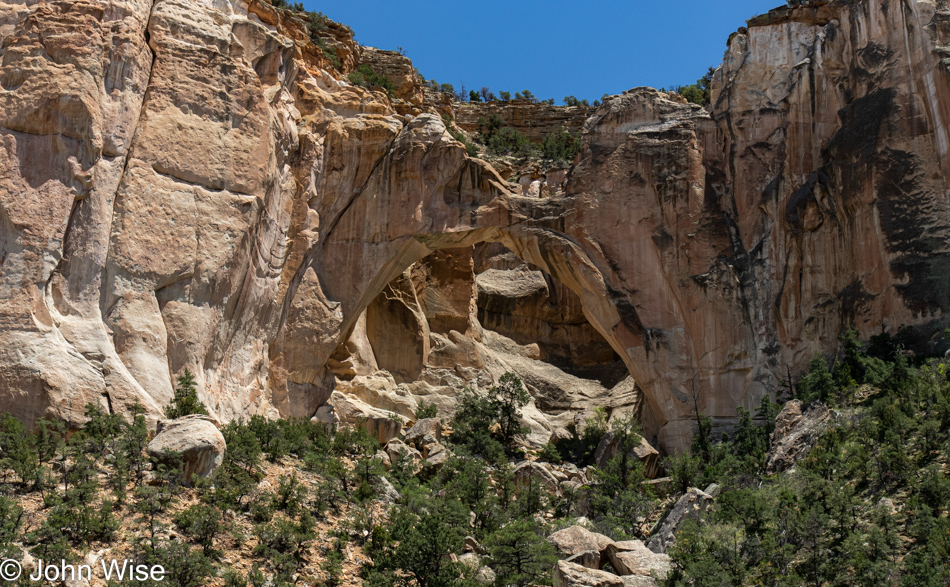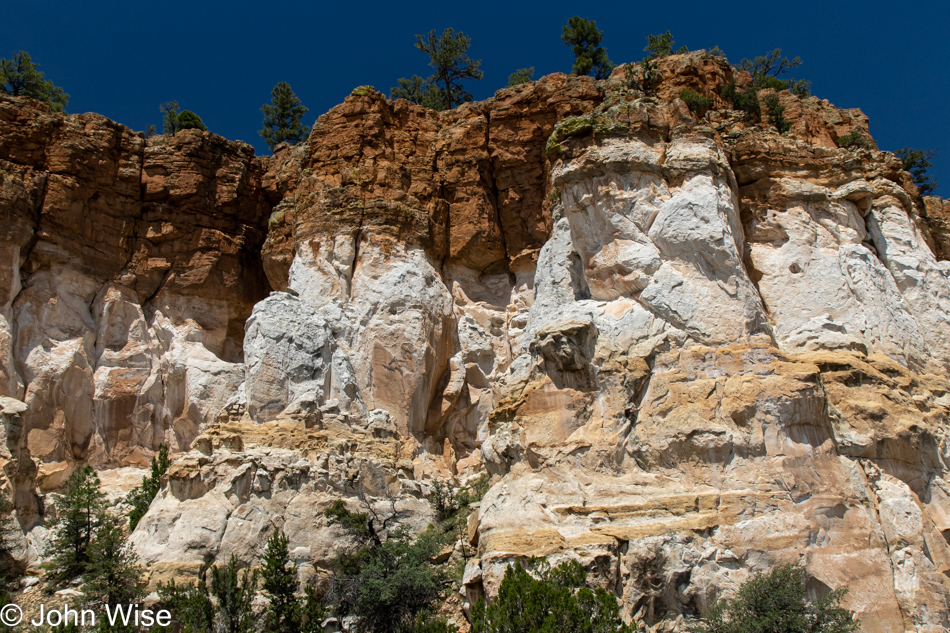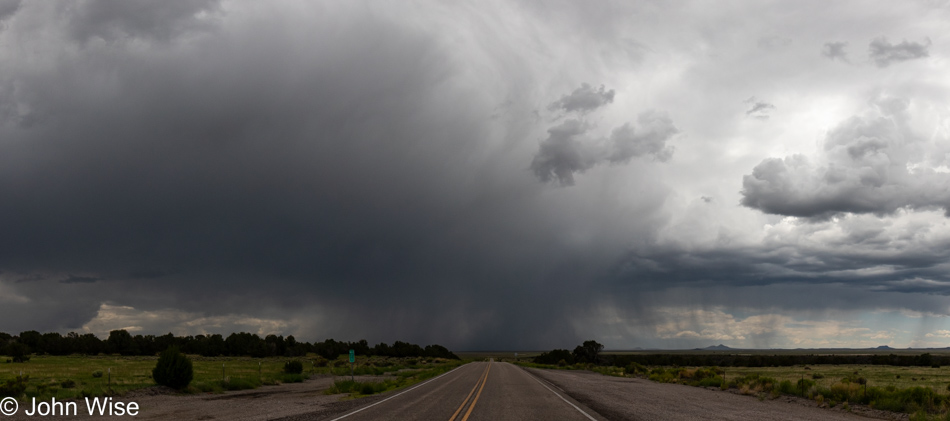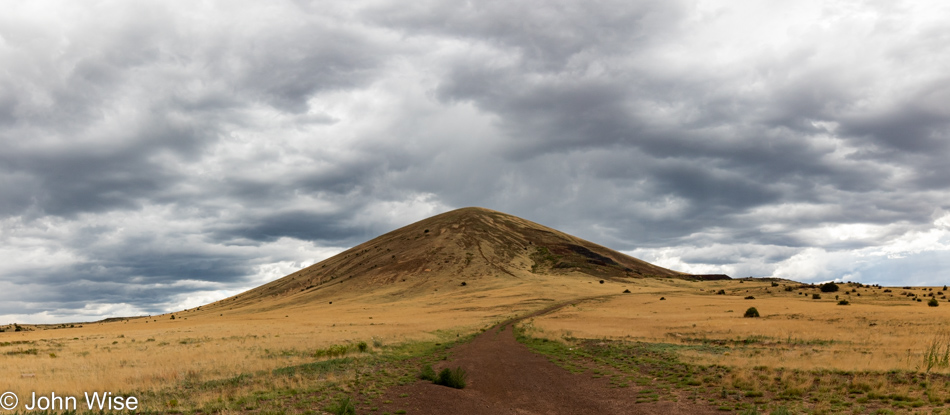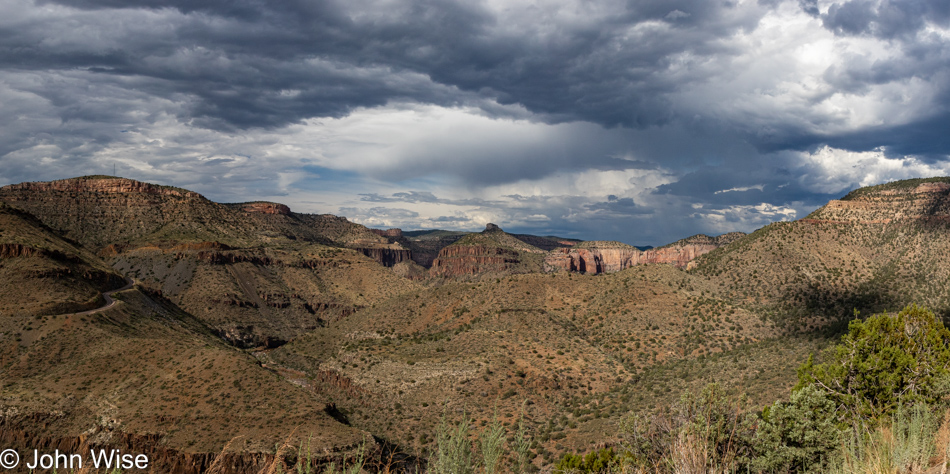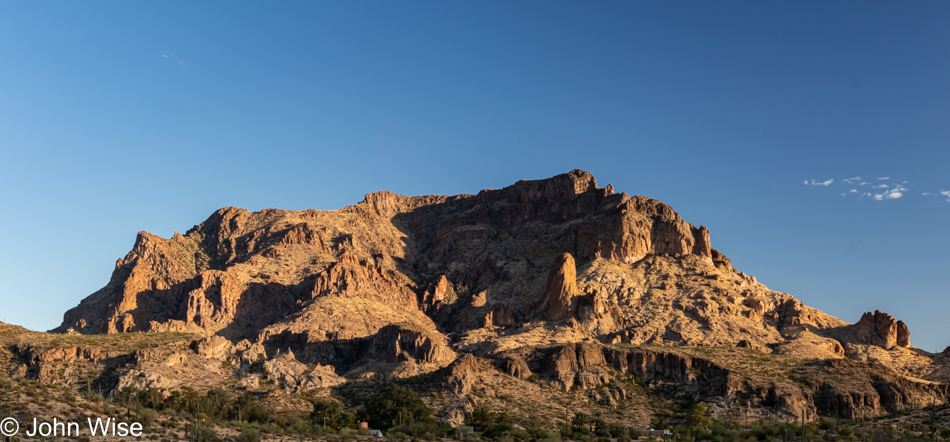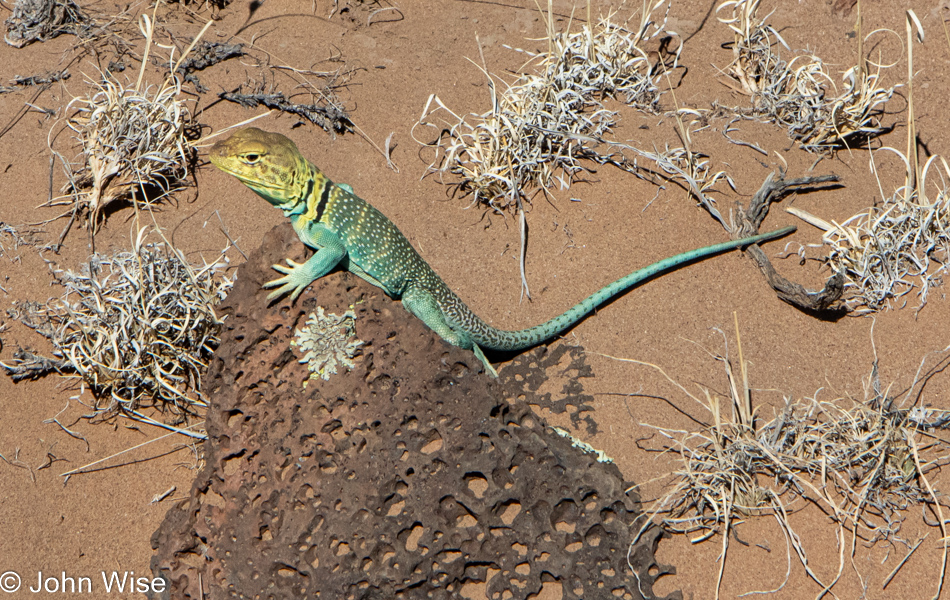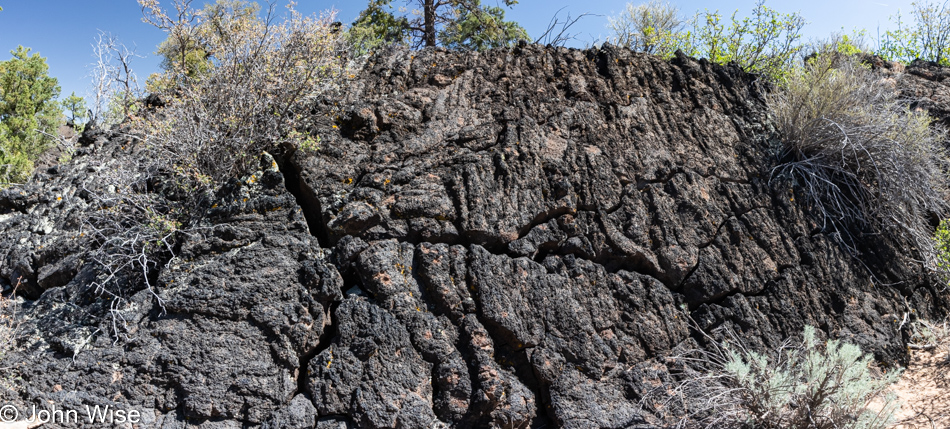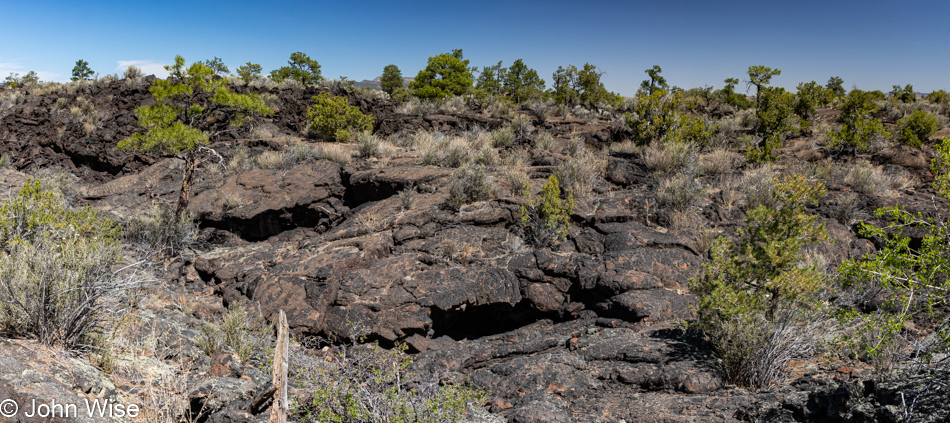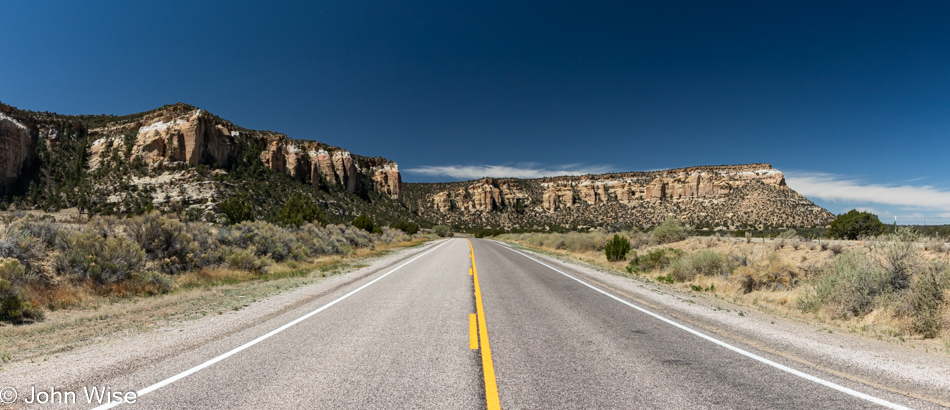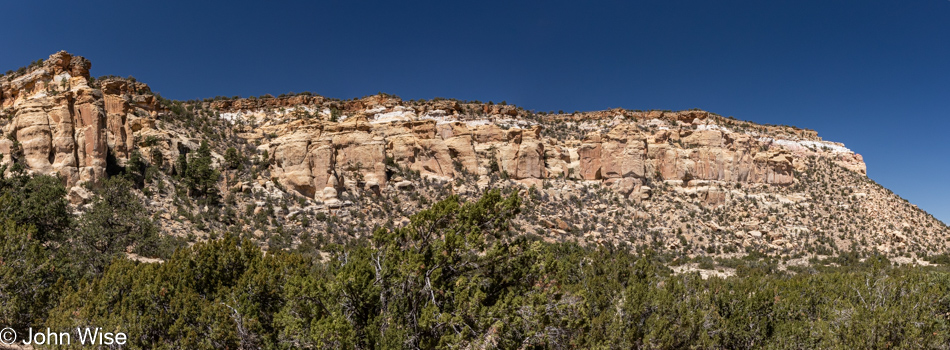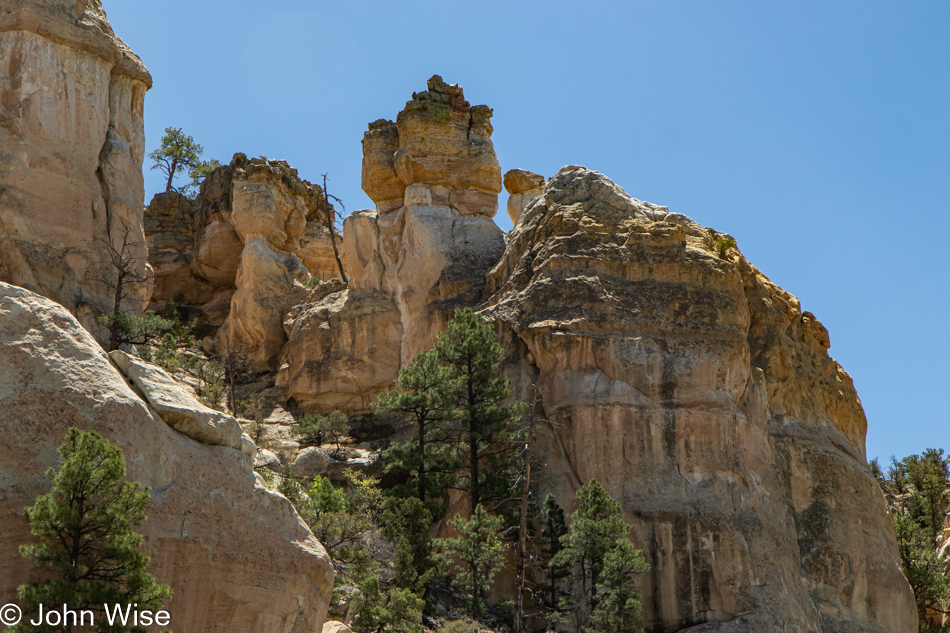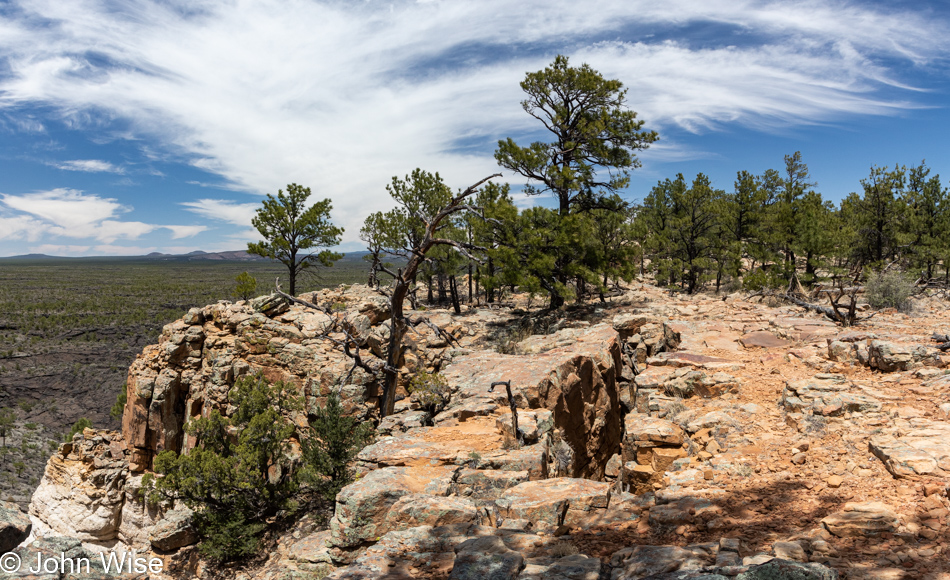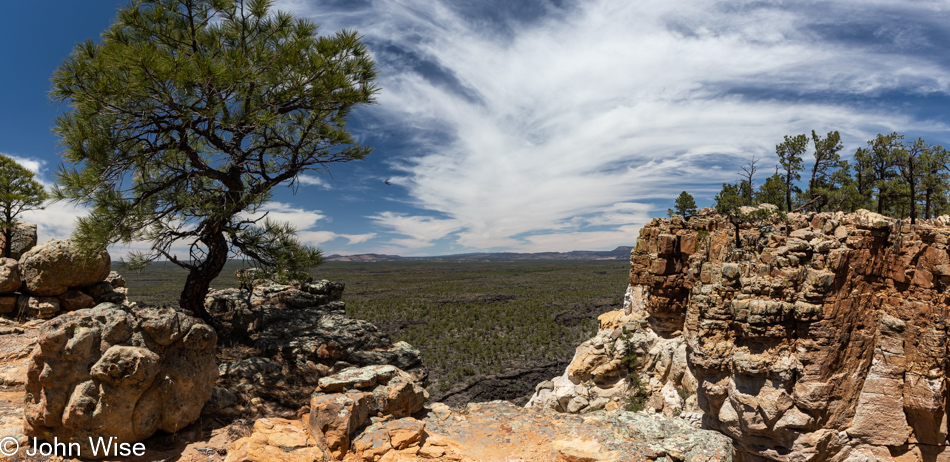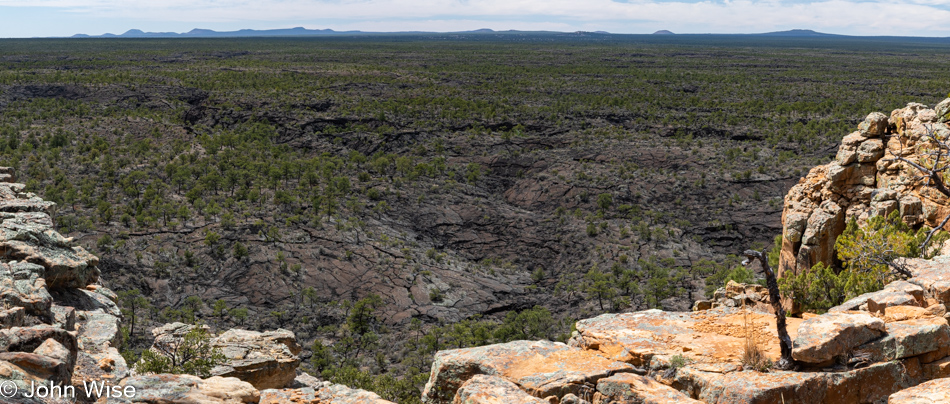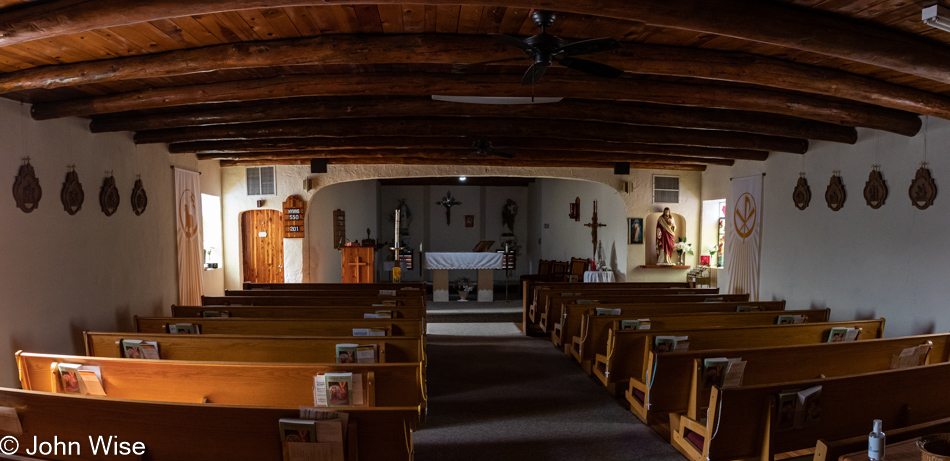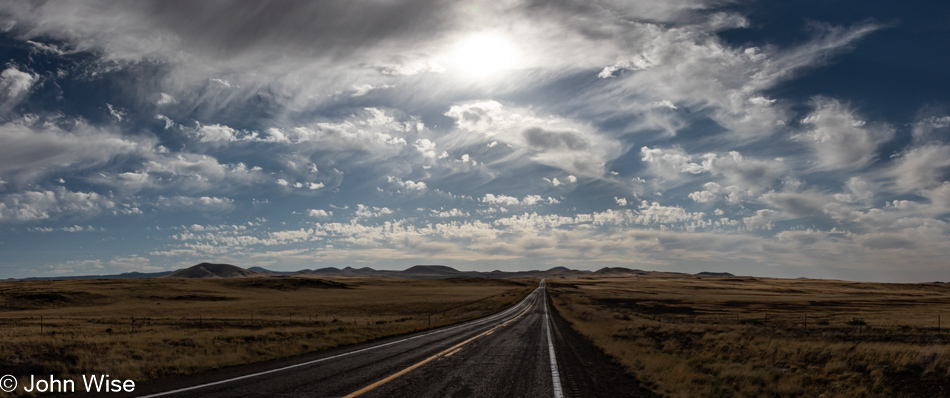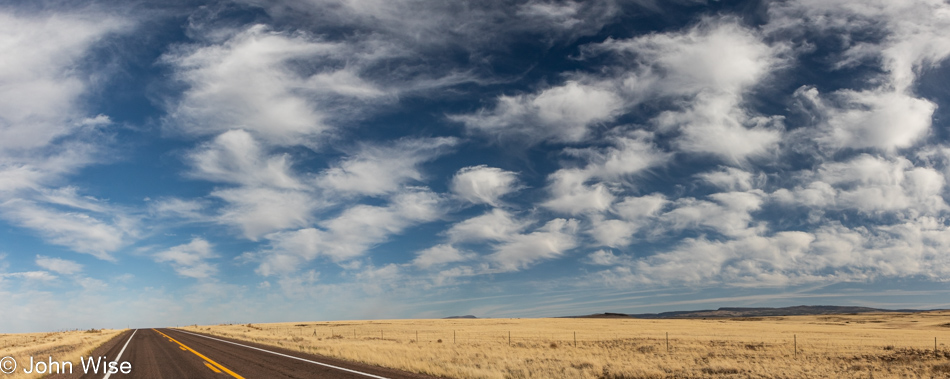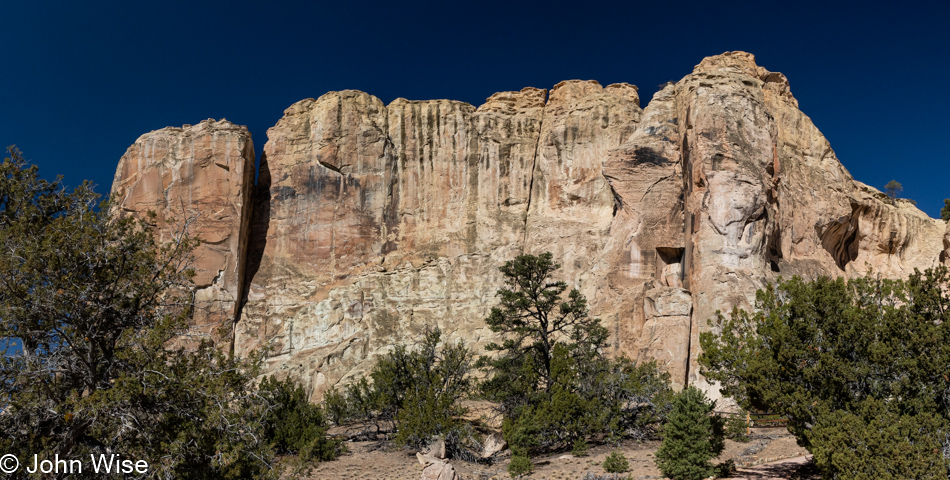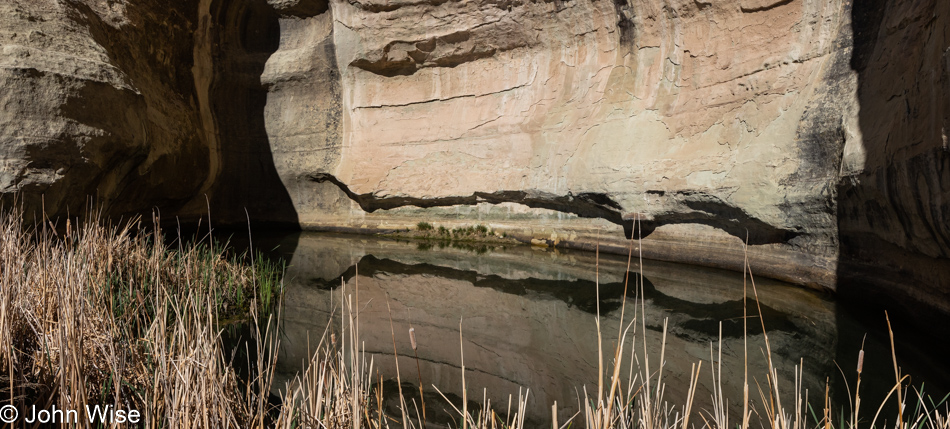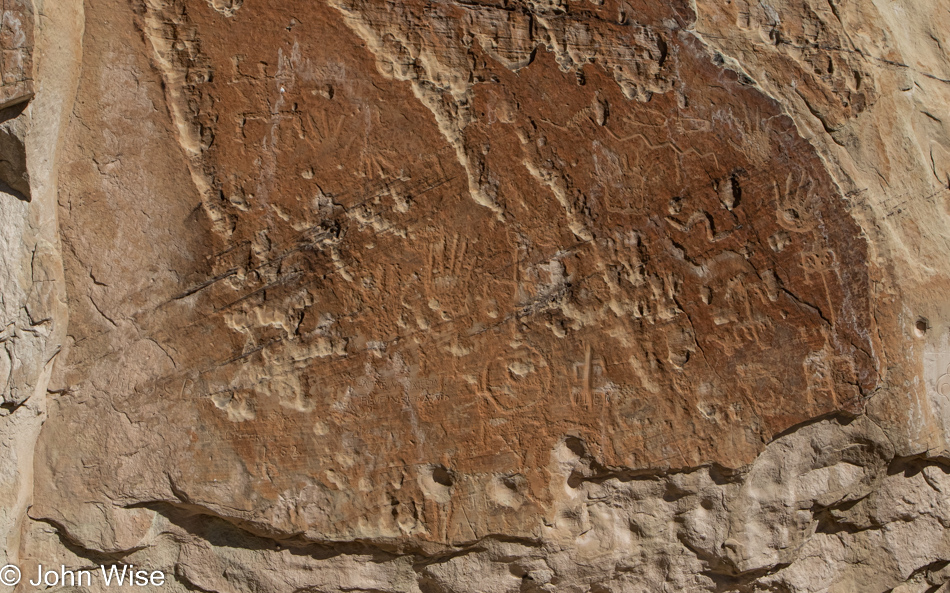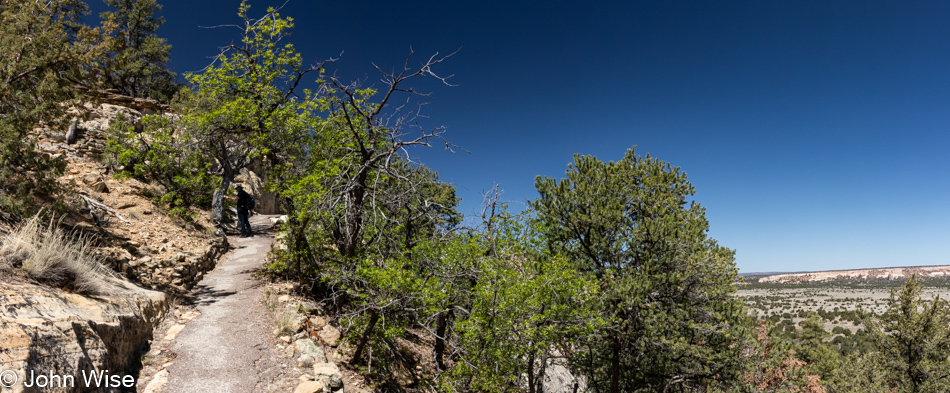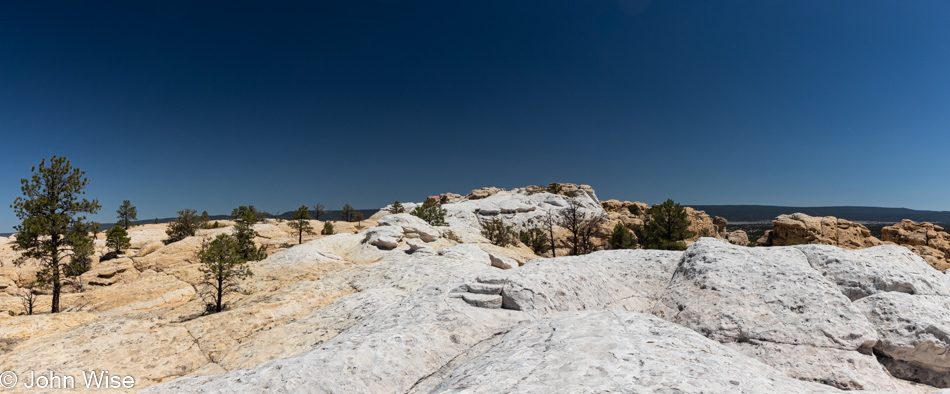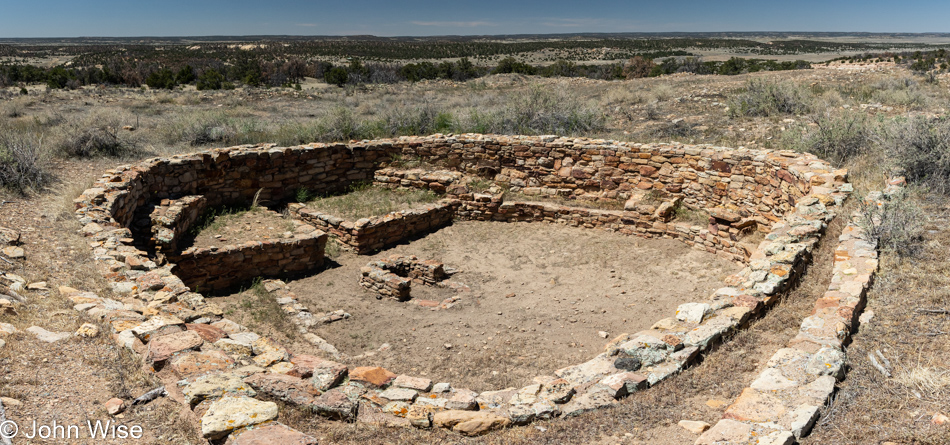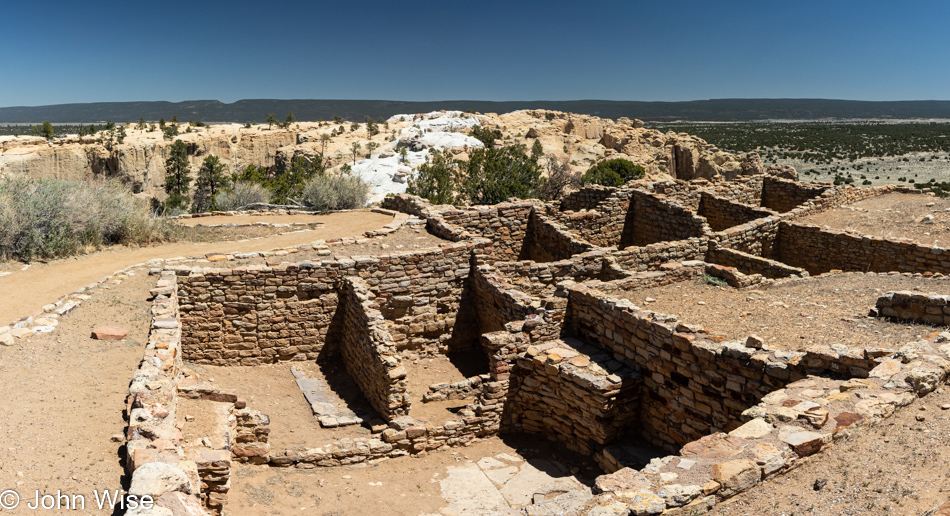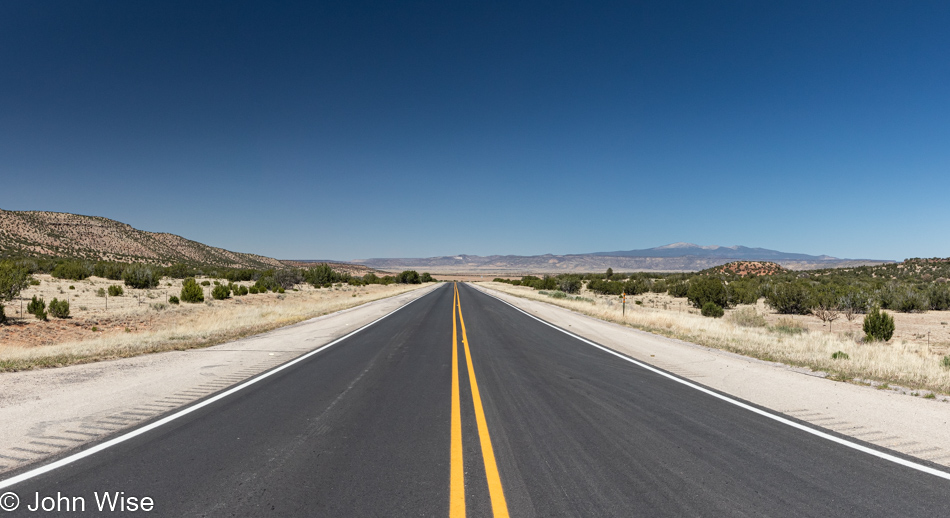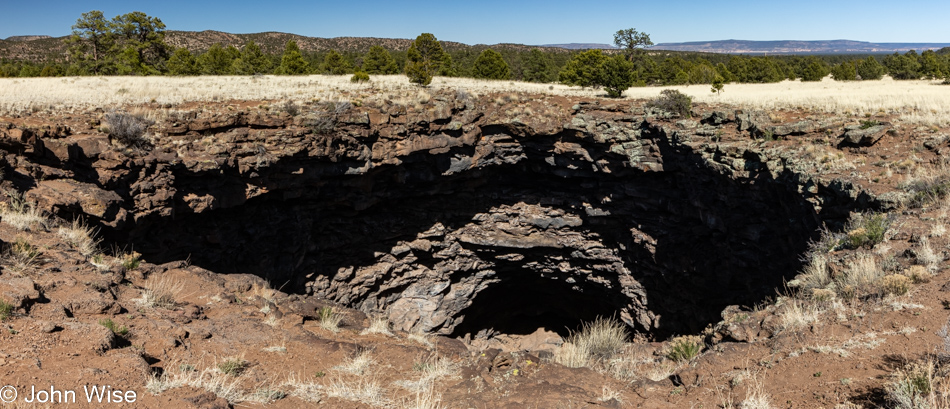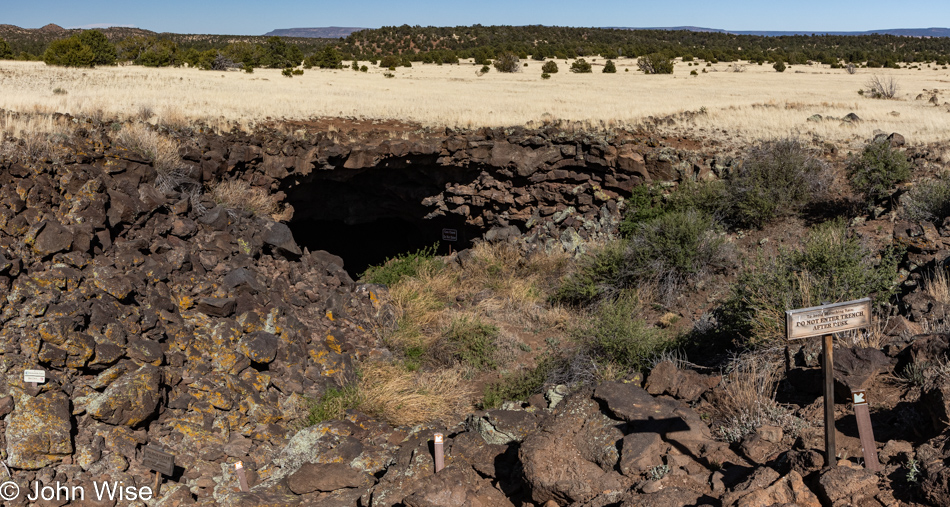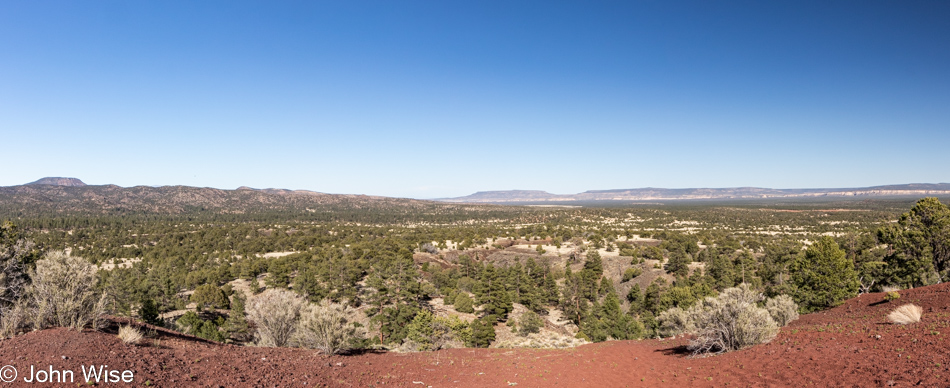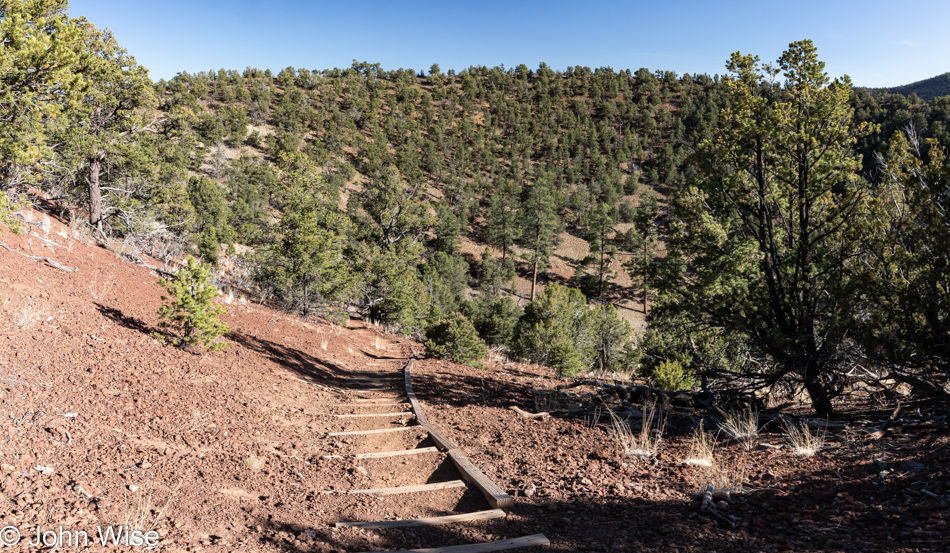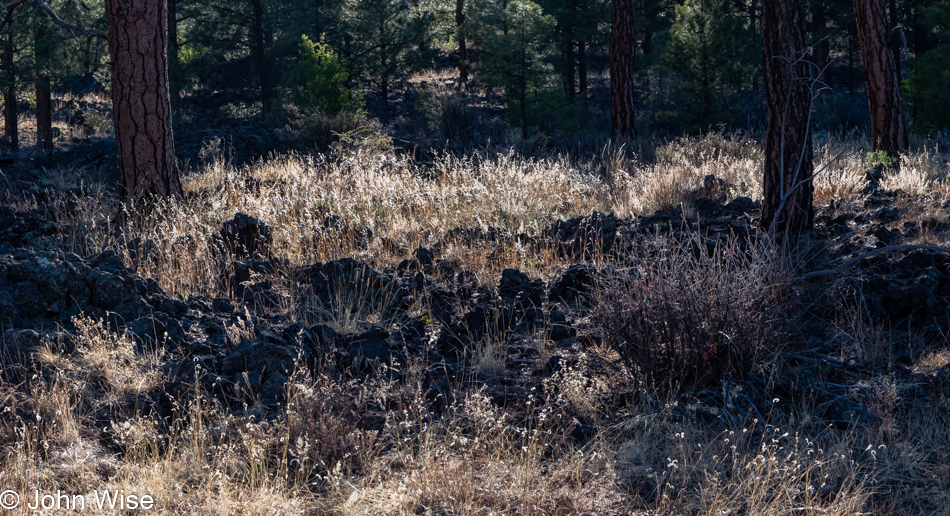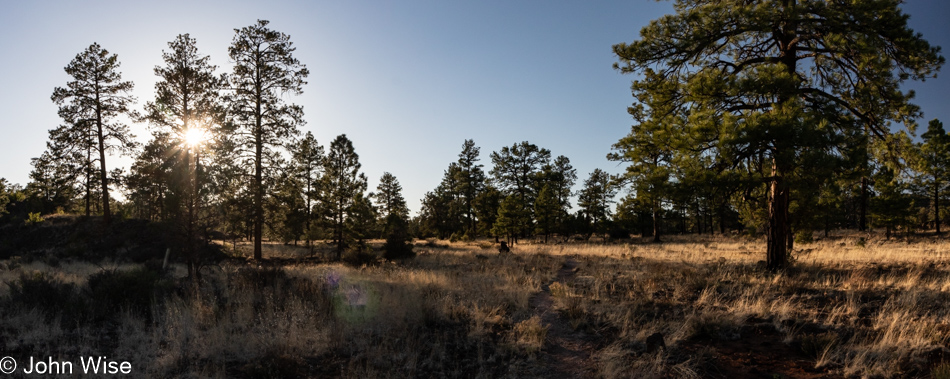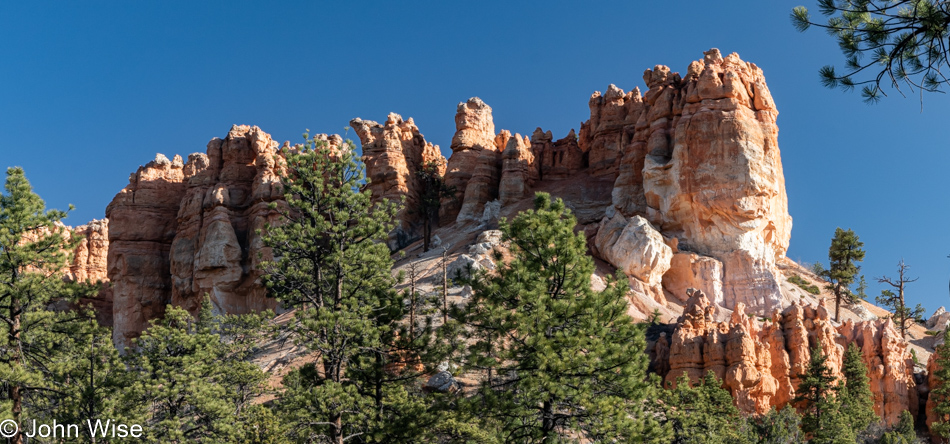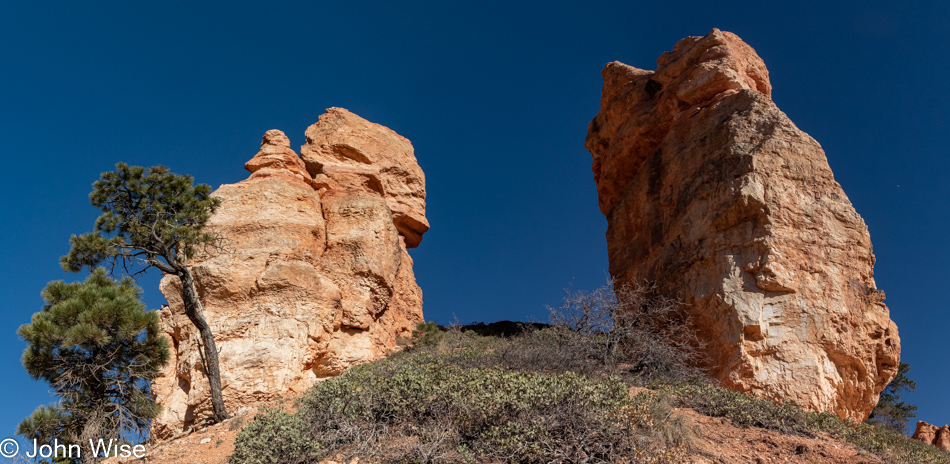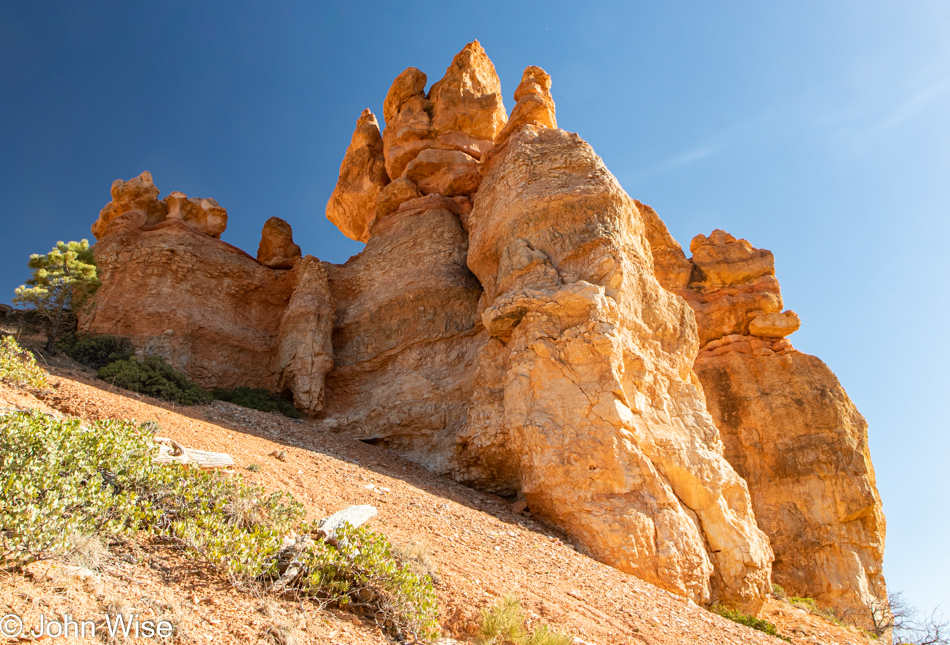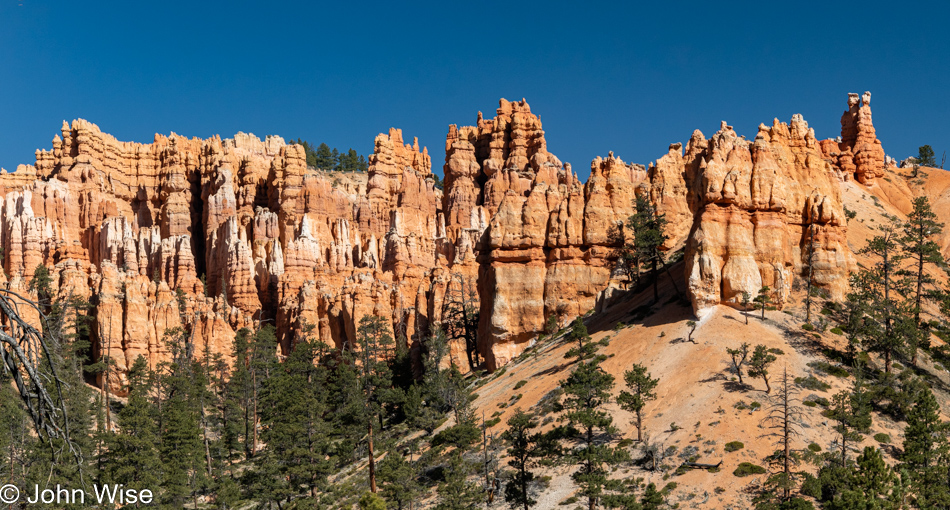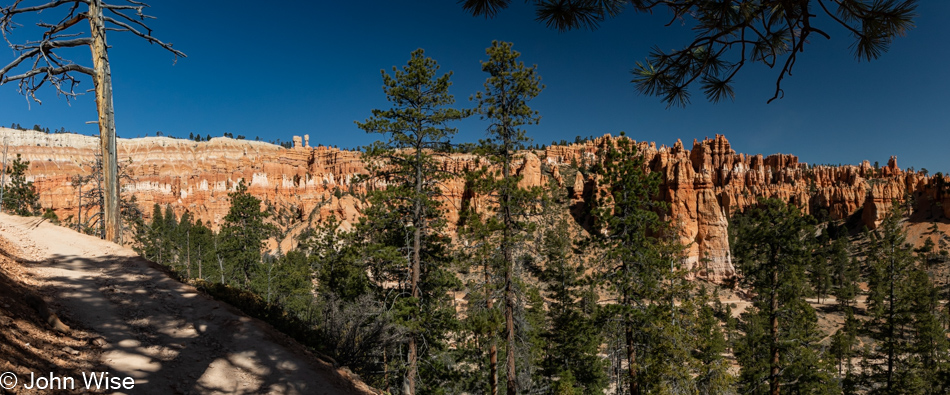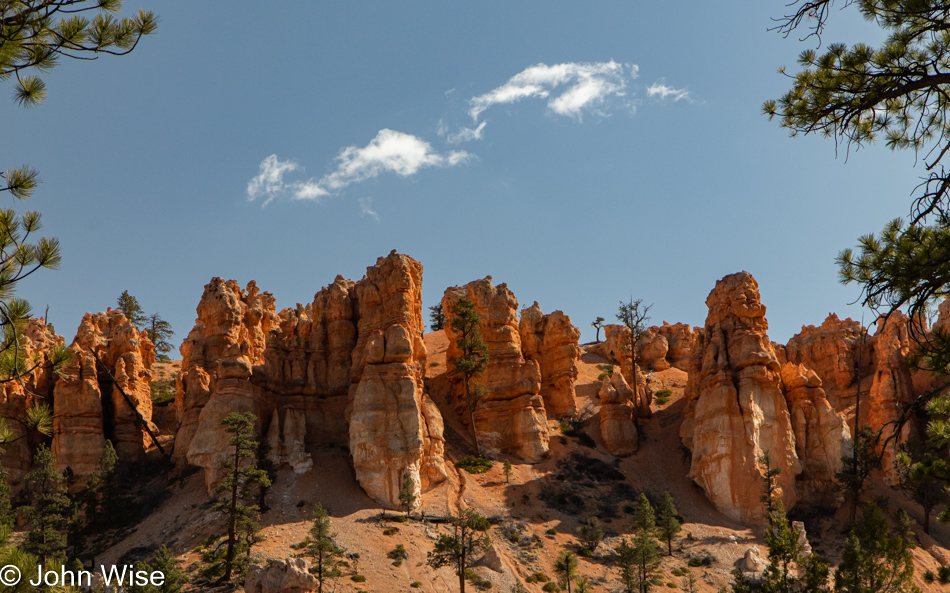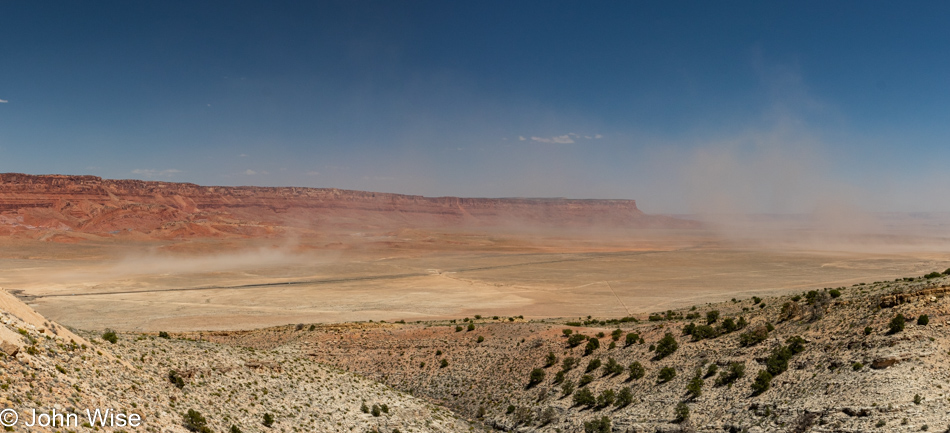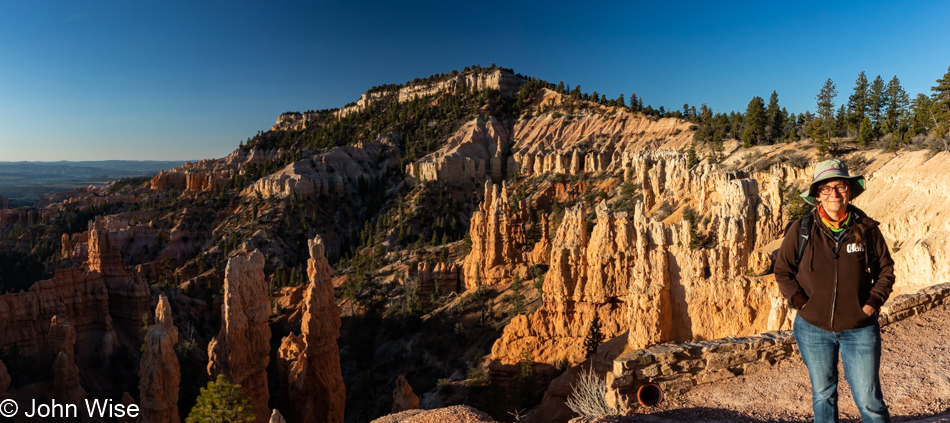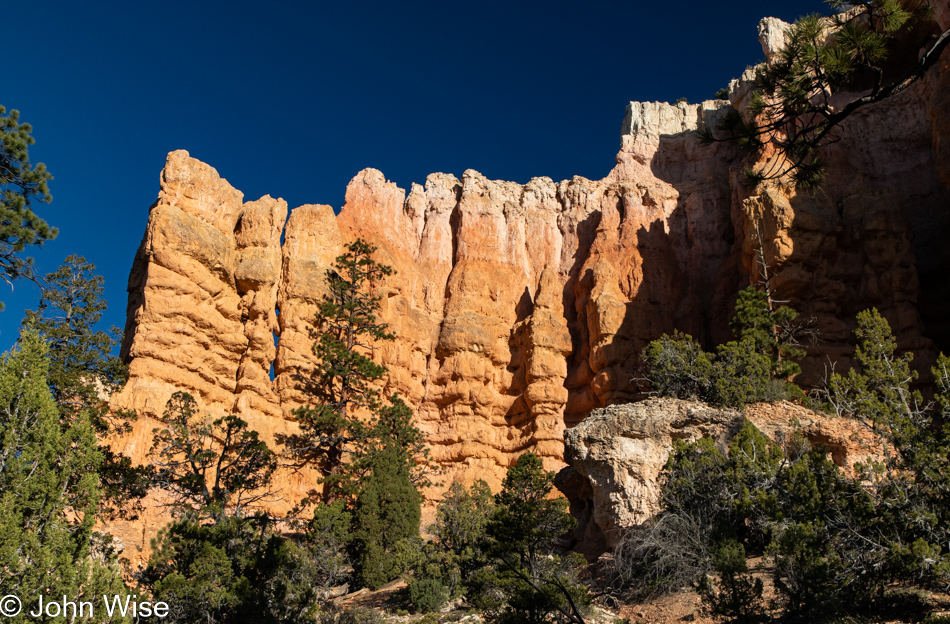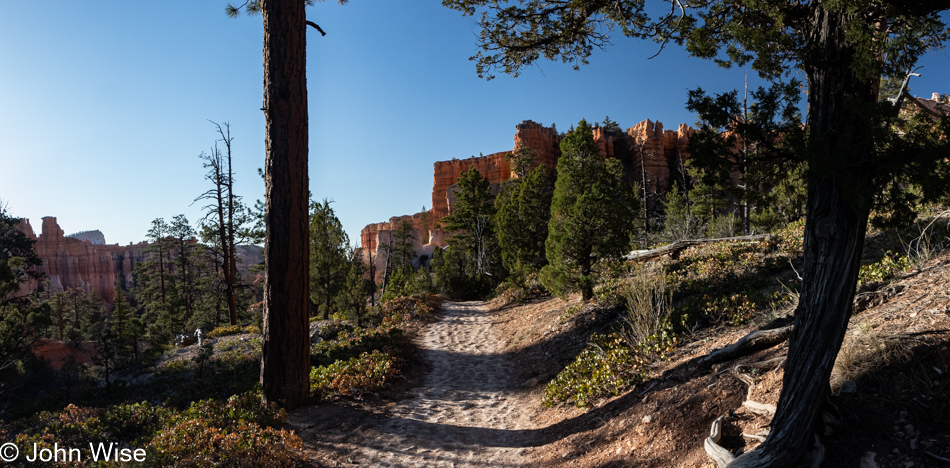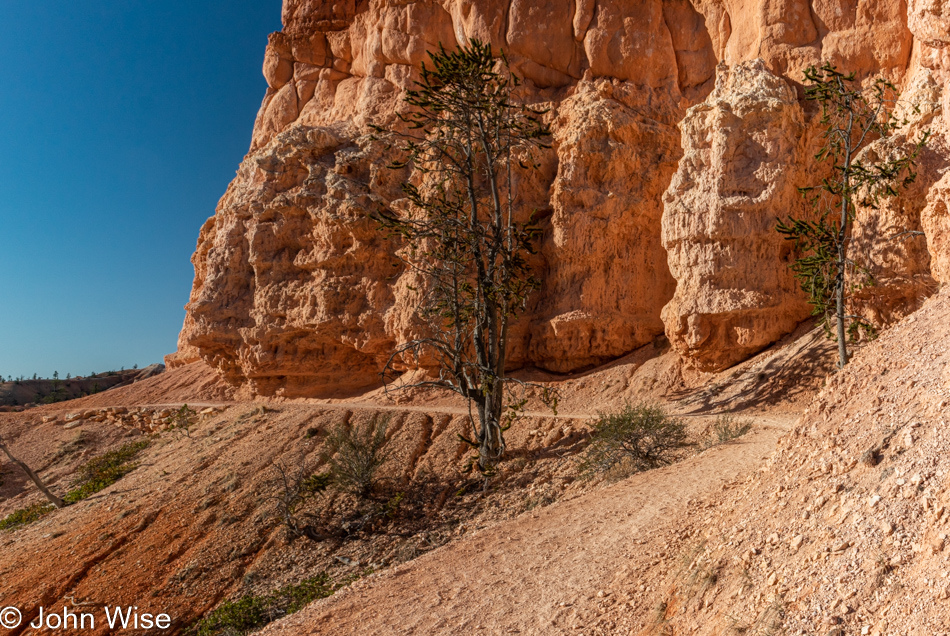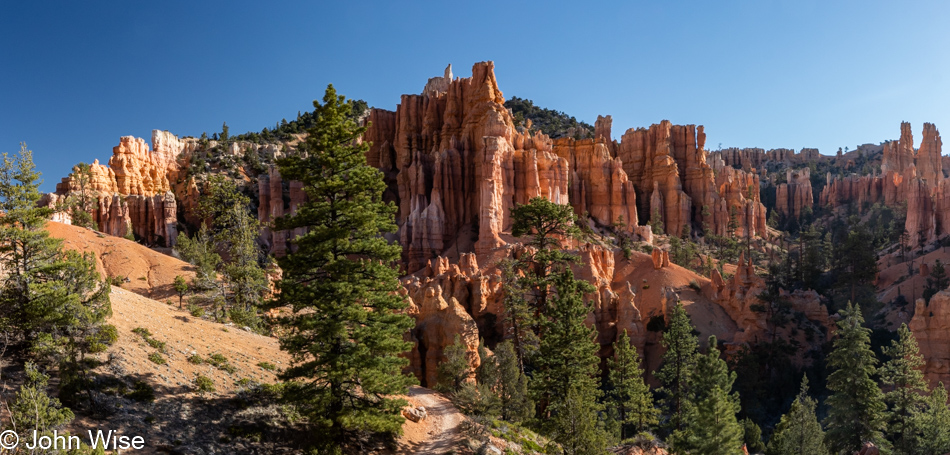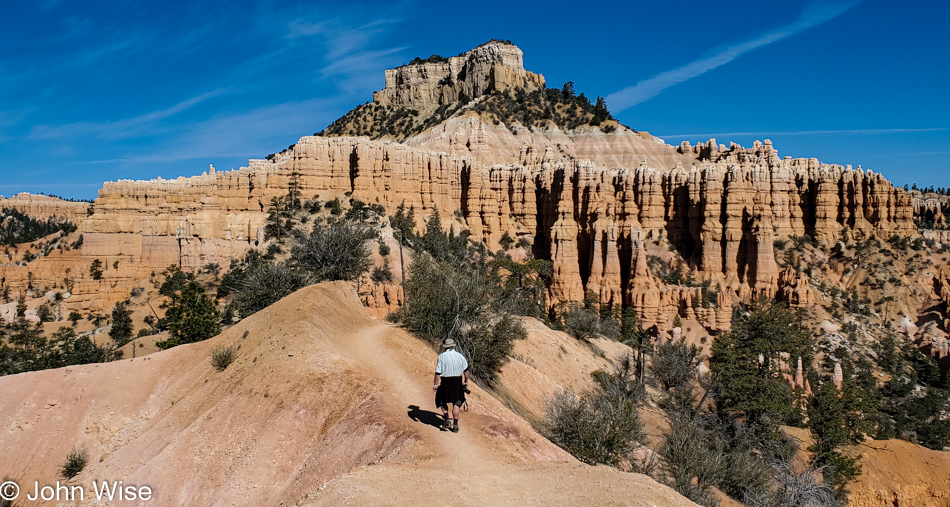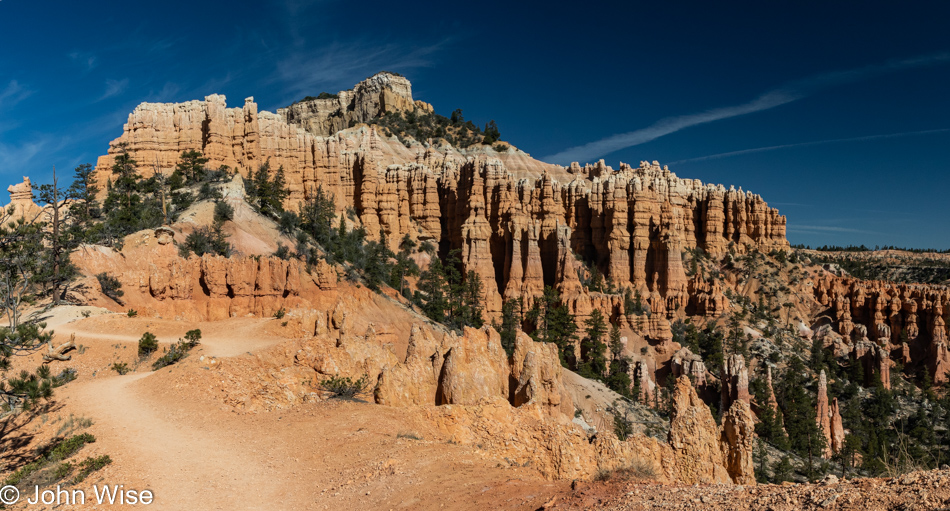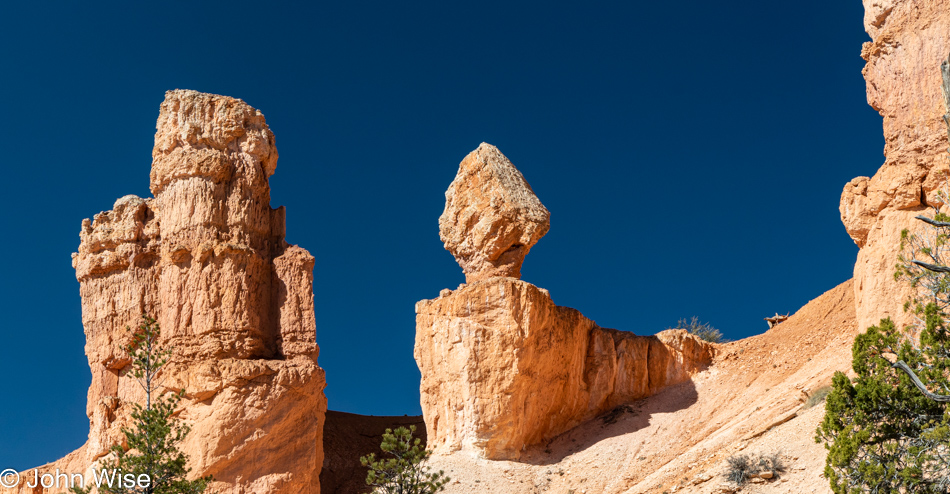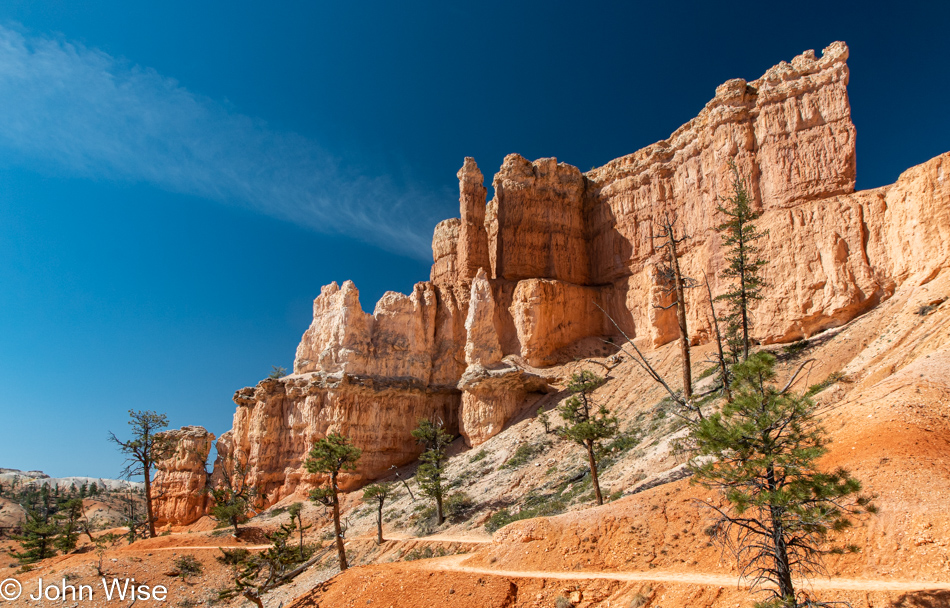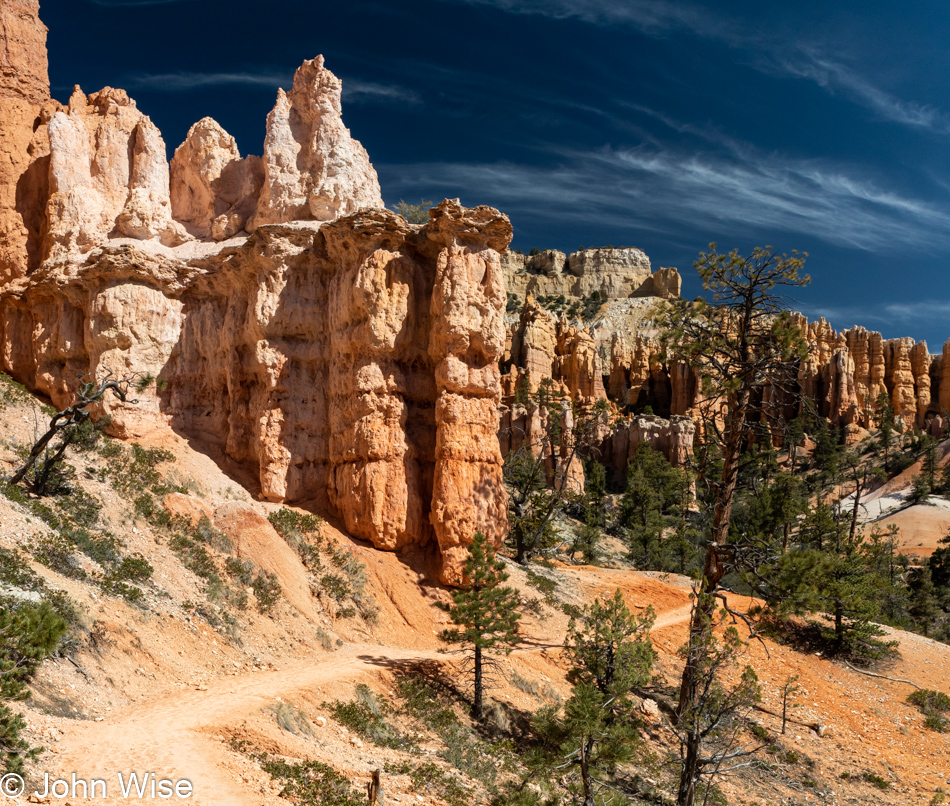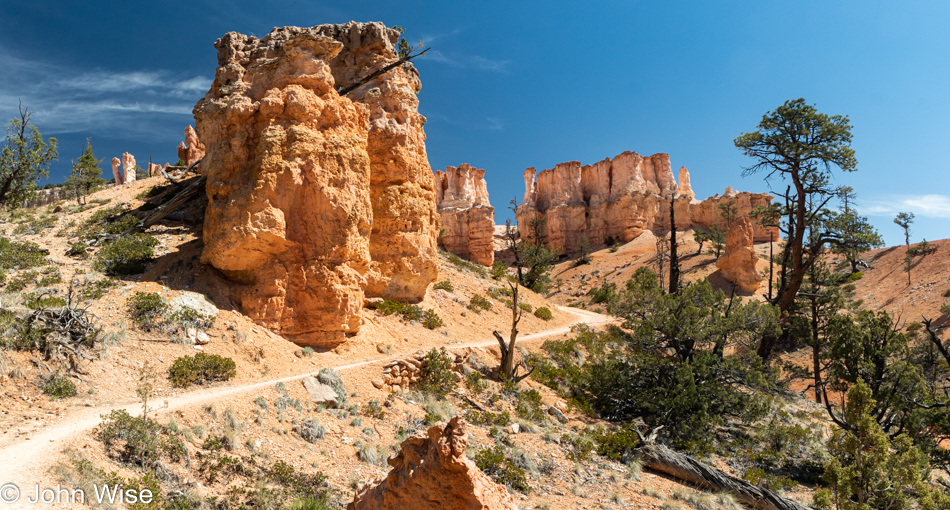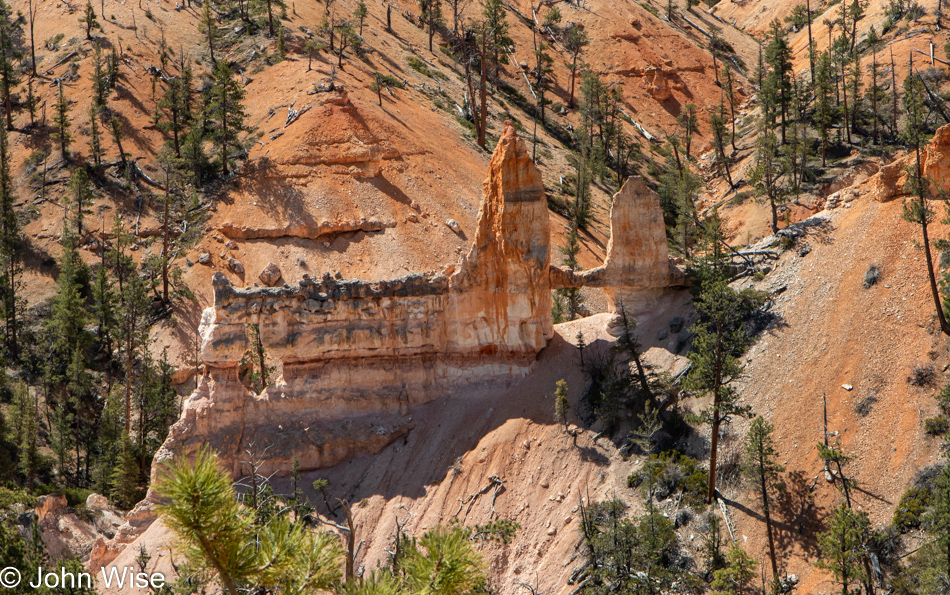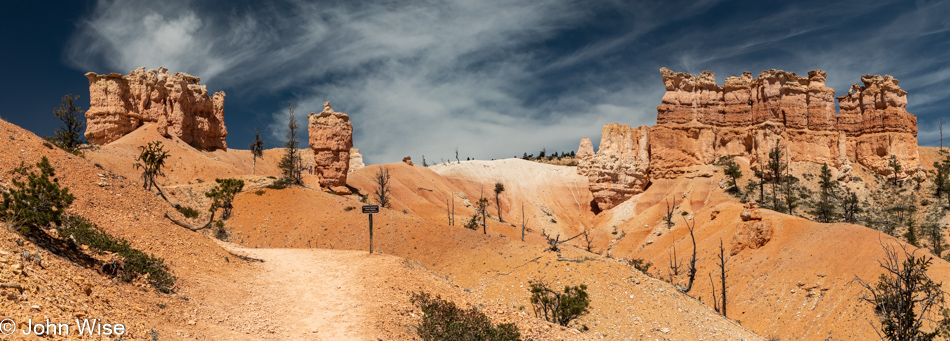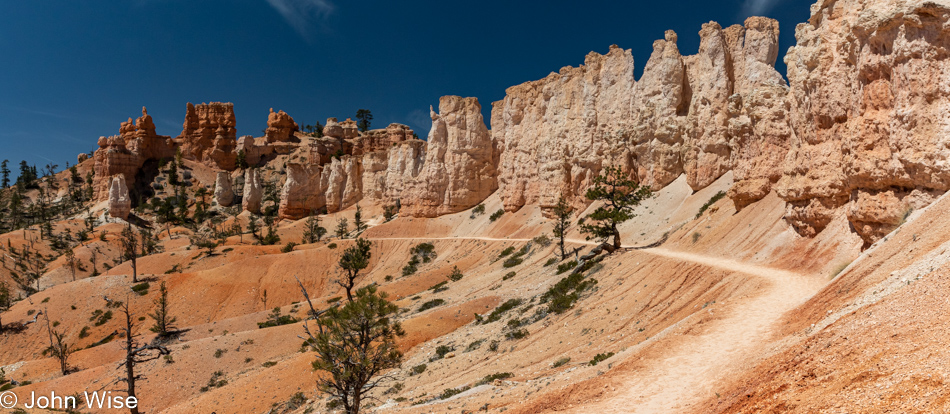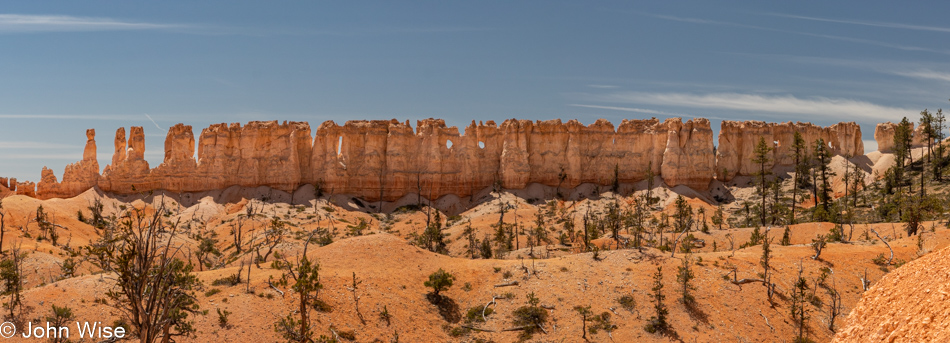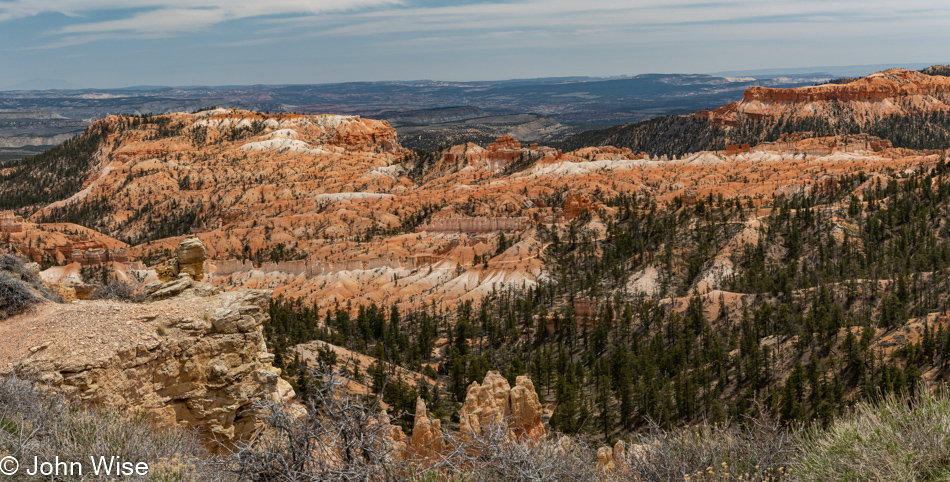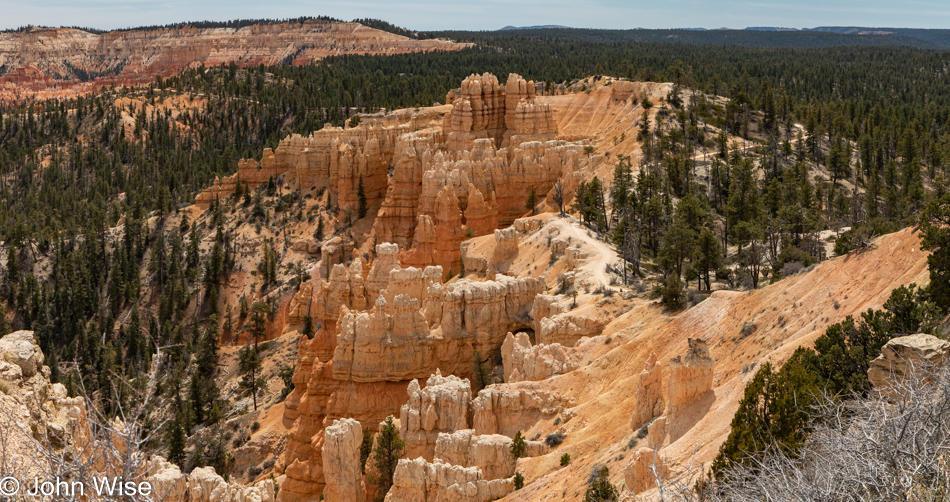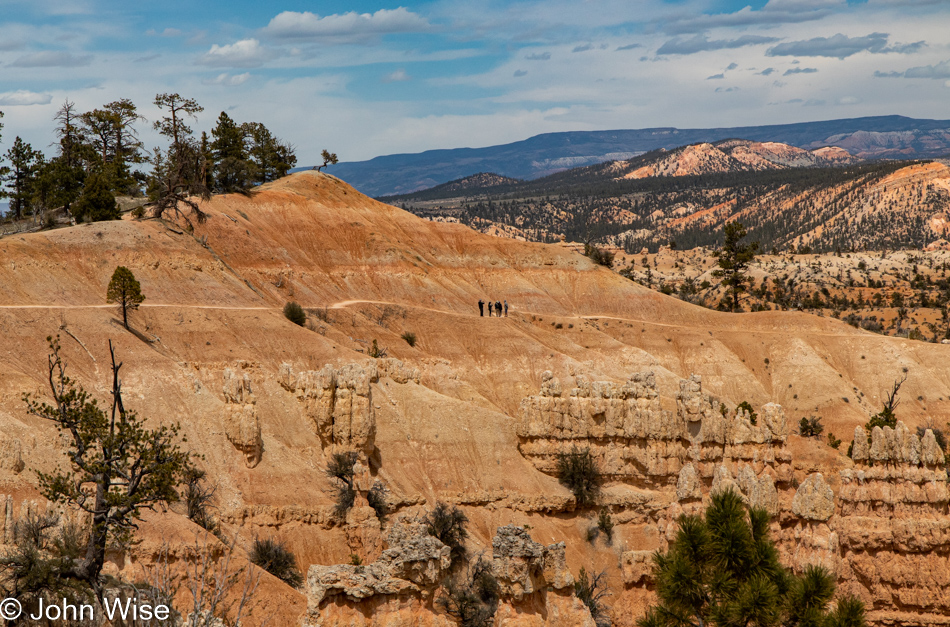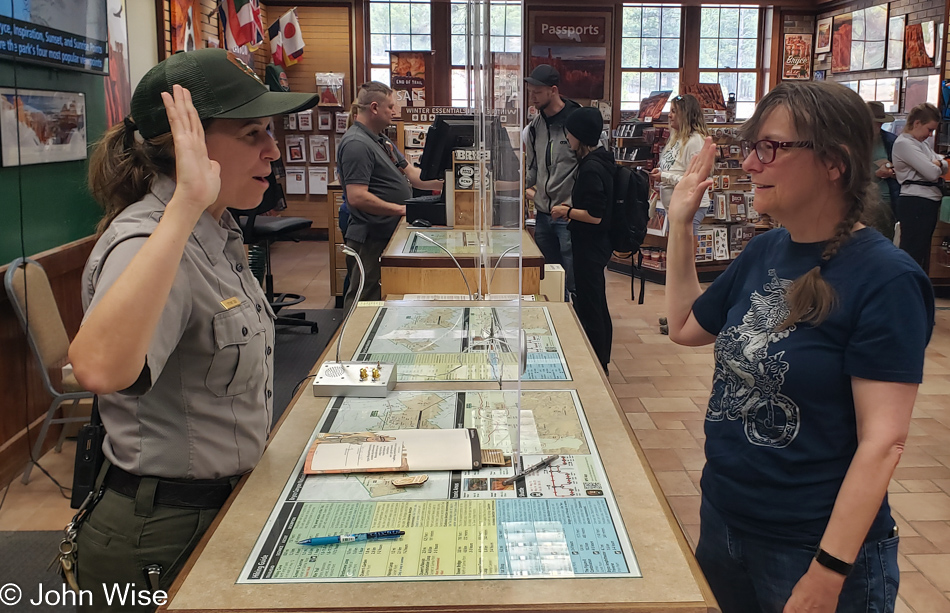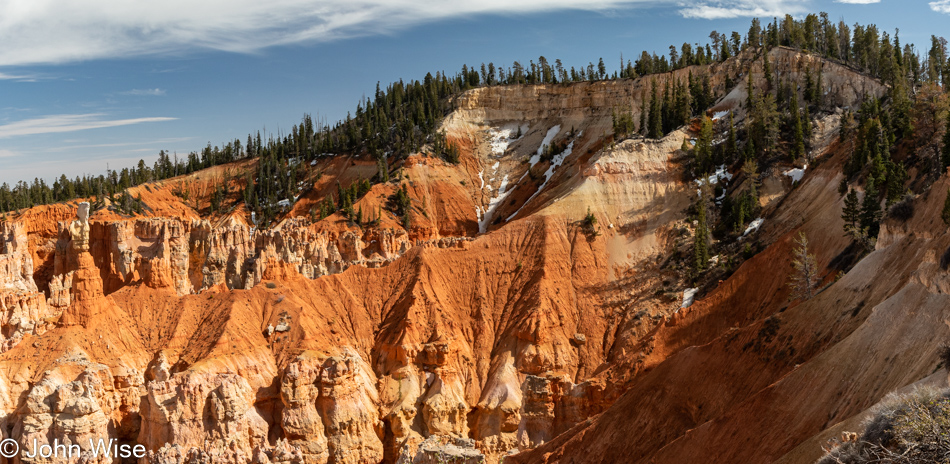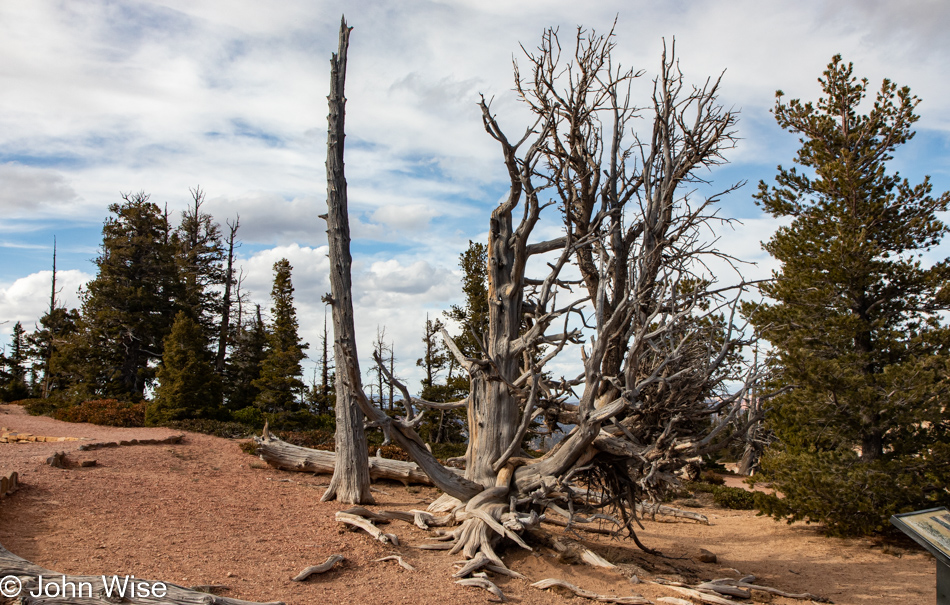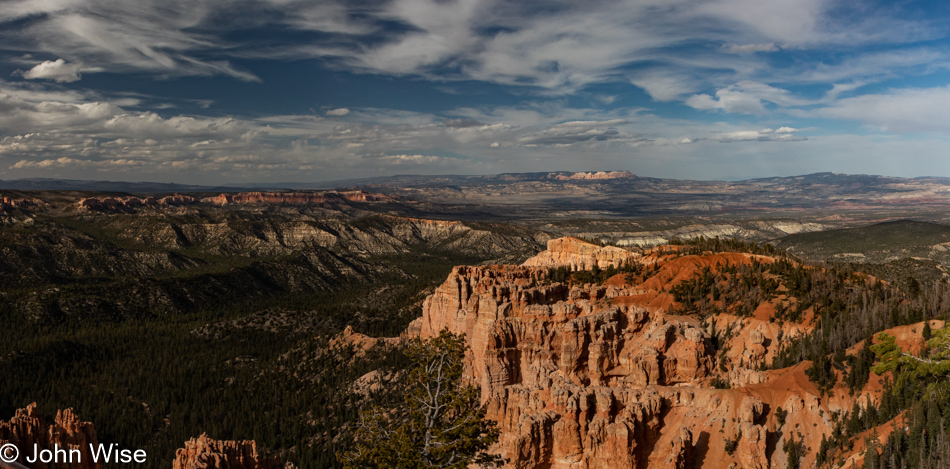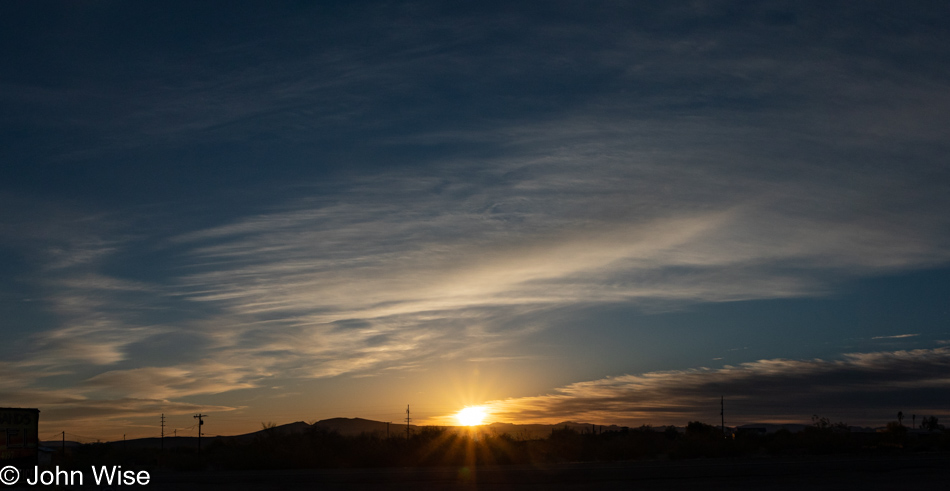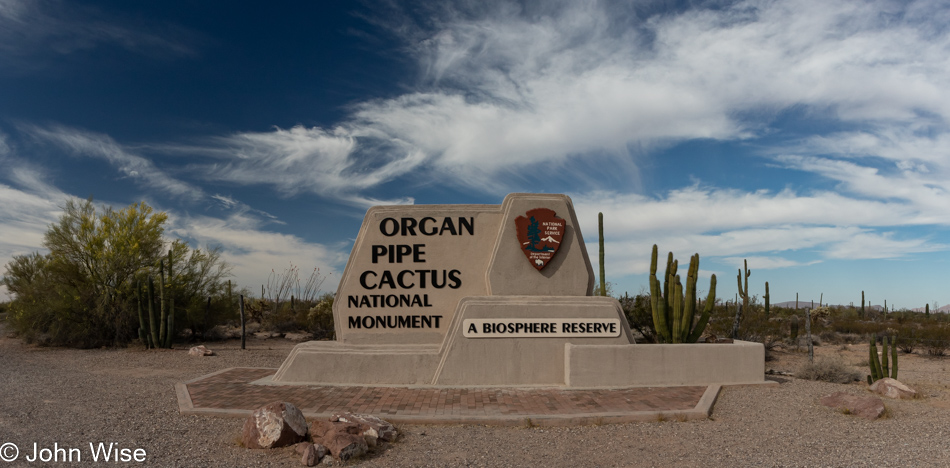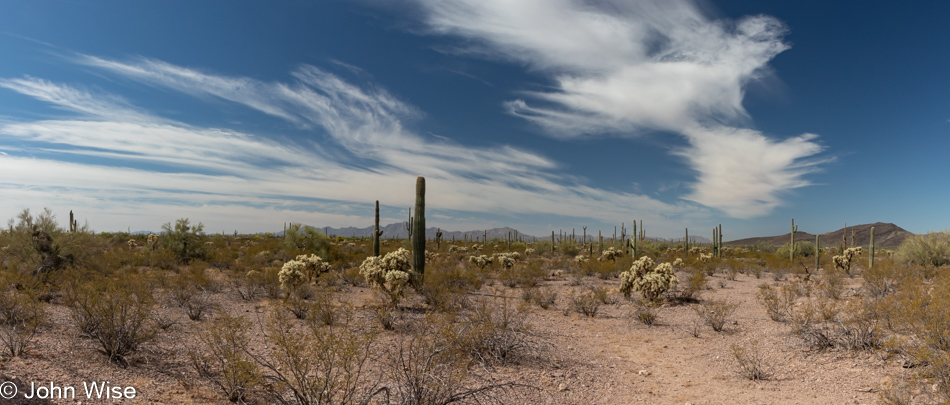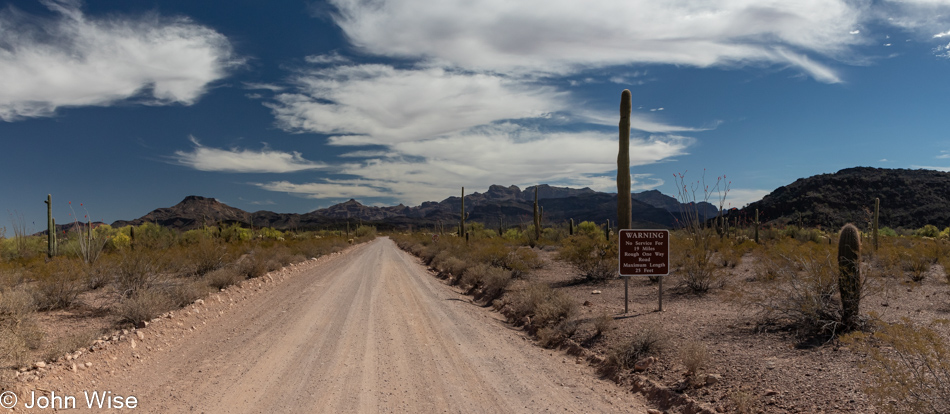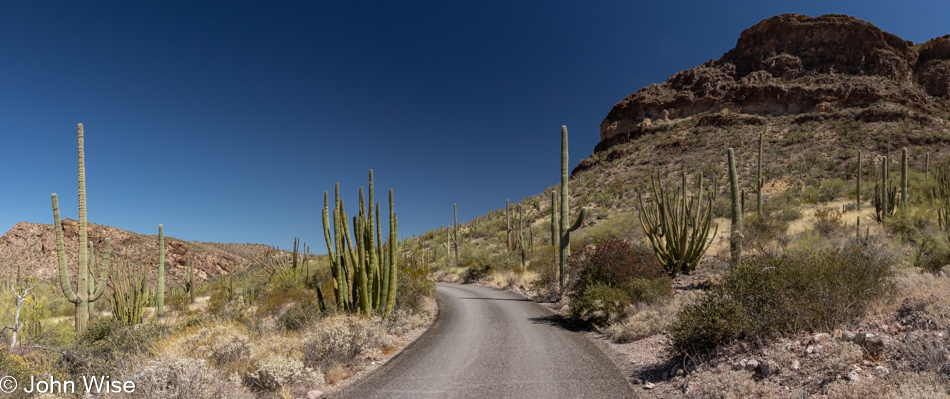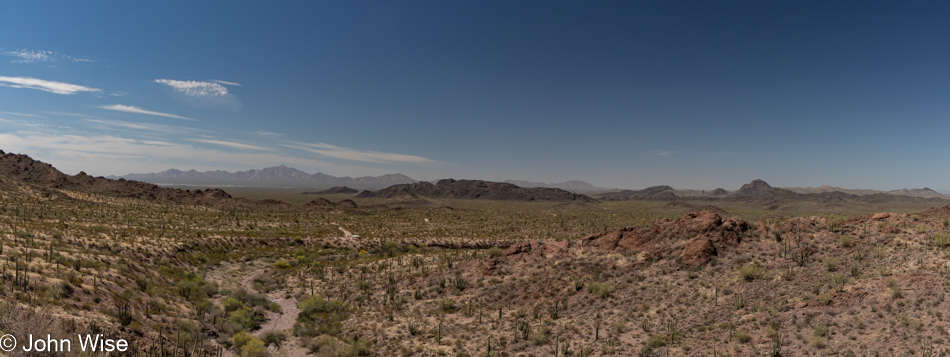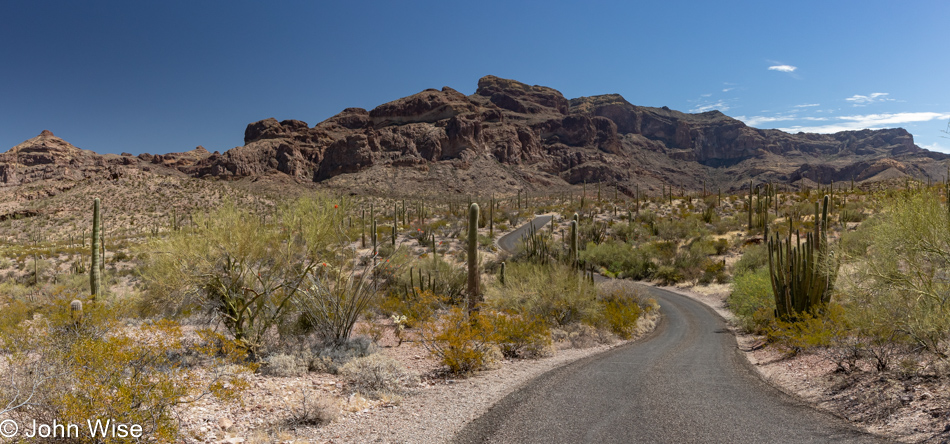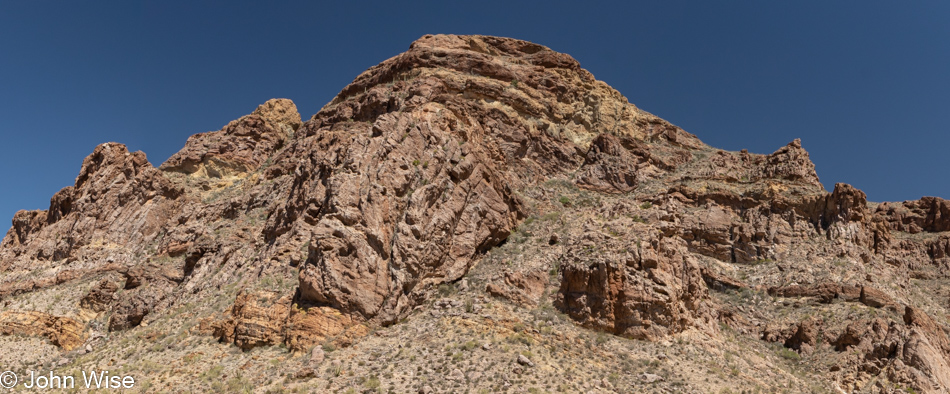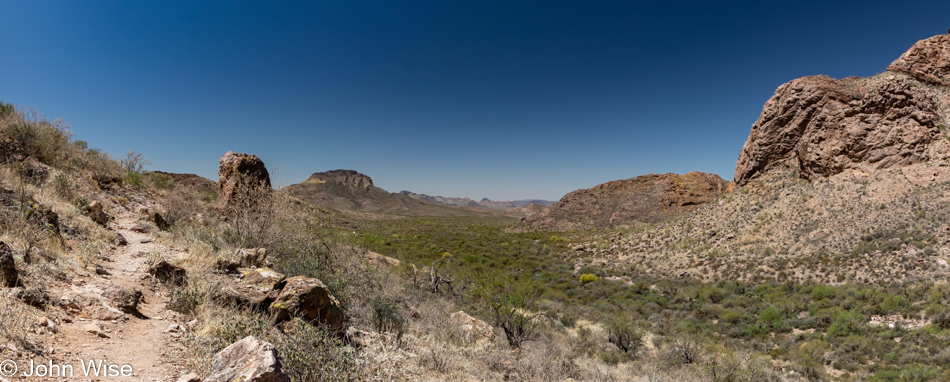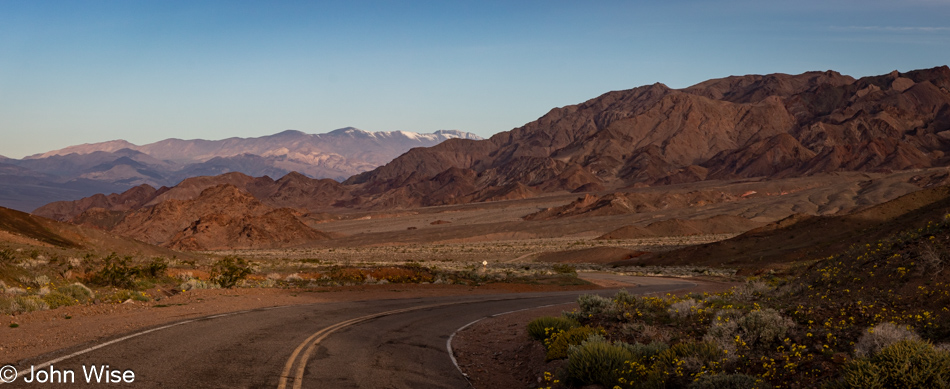
Recently, I turned 60, not with dread but also not without the nattering echoes of those who came before me and groaned of declining energy and poor stamina when they entered this age. When we left home yesterday, it had not been my intention for this trip to be a test of any sort, but maybe it will end up being some of that. With the arrival of my 60s, what impact might I find? Leaving Phoenix, we had a 450-mile drive ahead of us that should have taken about 7.5 hours, but with countless stops for photos of this and that, we optimized our indulgence by stretching out our time crossing the Sonoran and Mojave Deserts before arriving at the doorstep of Death Valley at 7:00 p.m. Checked-in to our room in Shoshone, we walked across the street to the old familiar Crowbar Saloon we first ate at back in 2007 and then took the dark road up to the hot spring pool, this also brought us to having walked 5.5 miles for the day. By 10:30, we were snoring, but if you read yesterday’s post, you’d already know some of those things.
It’s 5:30 in the early morning as we peel ourselves out of bed after sleeping better than is typical for our first night out on the road. We are embarking on our day in the wee hours even after our lengthy 17-hour day of traveling yesterday. The point here is, and this is only now dawning on me, we are still plowing into experiences and doing our best to take advantage of our time in the world. As we turned on the road that would bring us to Death Valley, the sun hadn’t yet peeked over the horizon, but by the time we were about to descend to the saltpan, the world of this harsh landscape was becoming well illuminated. Who knows what the rest of my next decade will bring, but here on the other side of 60, I’m thrilled to know that my stamina hasn’t fallen by the wayside.
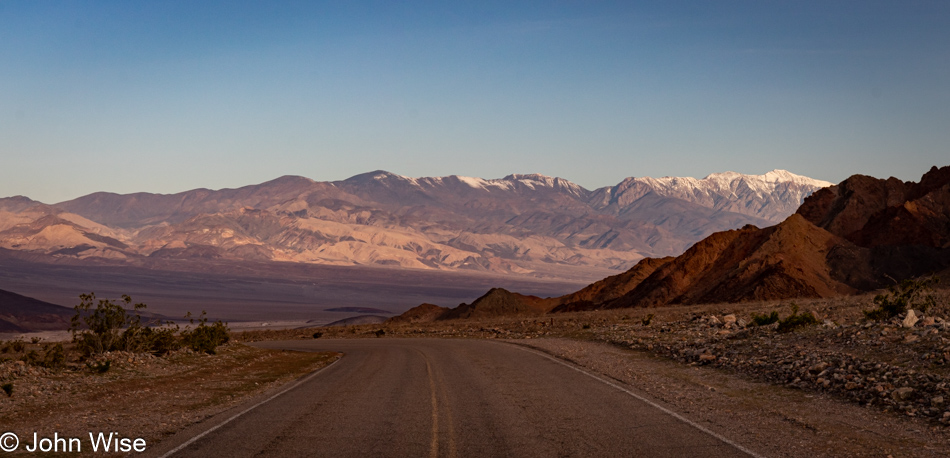
Having passed in and out of Death Valley from the west, the north, the northeast, and the south, the southerly approach is by far my favorite. The gradual approach from this side of the park also benefits from the quiet due to so few people out this way. Most visitors will congregate in the relative proximity of the visitor center. While many will go as far south as the iconic Badwater location (282 feet below sea level), that leaves the bottom 50 or so miles of the park relatively unvisited, and it is down here where our day begins in earnest.

There is no trailhead and no parking lot. We just pull up in front of mile marker 39 and start walking east. Our first hike of the day is Room Canyon, rated as a moderate 3-mile trail. The path to the canyon is not identified with cairns, but if you look at the ground ahead of you, you’ll see the footprints of others, and you can hope they went in the right direction. This is as good a place as any for me to include my endorsement of the AllTrails app and how important it has become to us. Before arriving somewhere, like here in Death Valley, which doesn’t have phone service, one should identify the trails they are interested in and then download the trail maps while they have plenty of signal. Our go-to trails are typically rated as moderate because easy is just too easy, though, for an interpretive experience, those are often not bad. The strenuous trails often feature rock climbing, exposure, or some serious elevation gain. Everyone who ventures into America’s national parks and hikes should have AllTrails with them and do some research before embarking on their adventure.

After our short hike into an alluvial fan, we are now in the mouth of a canyon carved out of the alluvium that’s been deposited from the eroding mountains behind us.

The post title mentions stamina and is in reference to what we’ll have to muster if we are to capture the three hikes we have penciled in as the activities for our day, but by now, it also speaks to what I’ll require to complete writing this post that still has nearly 50 photos below this one. Should you be able to slog your way through this marathon post, which will likely veer into a fair amount of prolix (defined as speech or writing using or containing too many words/tediously lengthy), you too will have had to find your stamina for such a long post to find what gems might exist here, if any.

For Caroline and myself, the gems are many, at least in viewing the photos that we find to be magnificent. The writing that accompanies these images is often a mixed bag where at least I wonder if I’ve not said this all before. Even if I add a new twist or some bit of delightful poesy where a verse finds a potentially enchanting resonance, one must toil over hundreds if not thousands of words until they, too, find a diamond in the rough.

Speaking of finding a diamond in the rough, it’s now been 10,000 years and 12 trillion experiences shared with this woman, who (according to her) has enjoyed being between the proverbial rock and a hard place that is our relationship. There’s something about her smile here that may not be apparent to others: it is the look of “Wow, I can’t believe we are here.” Today, along with our planned hikes that are not considered to be some kind of “I’ve worked for this, and I’m owed it,” is a day of astonishment that we have the ambition and compatibility to venture into places with someone who equally enjoys the time. How far we go is irrelevant; how far we’ve come carries a satisfaction that accumulates, as does our love.
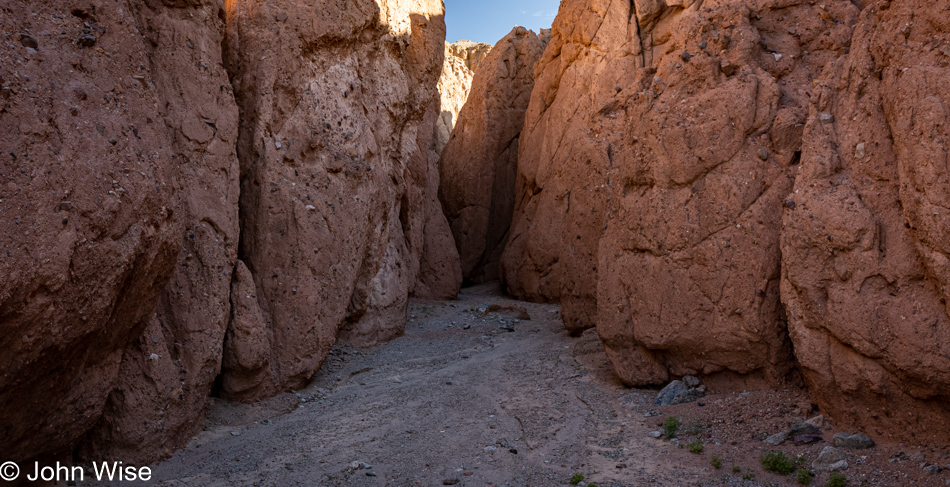
Had this been the extent of our adventure, we’d leave and realize our good fortune to have been able to find so much indulgence between yesterday’s drive up, time in the hot spring last night, sunrise this morning, and this first bit of exploration in Room Canyon here at Death Valley. But this is only the beginning, and nobody should ever, for even a second, consider that there are greater rewards ahead. Every moment is the most valuable token of a splendid life any two people have been granted.

I don’t believe that those who named this place Death Valley were being ironic, but then again, we do not call Earth the Death Planet, though death happens every day. I vote for renaming this national park Massively Wow Life Valley because being here amplifies the sense of how incredible it’s been that life took hold on this outpost in the Milky Way.
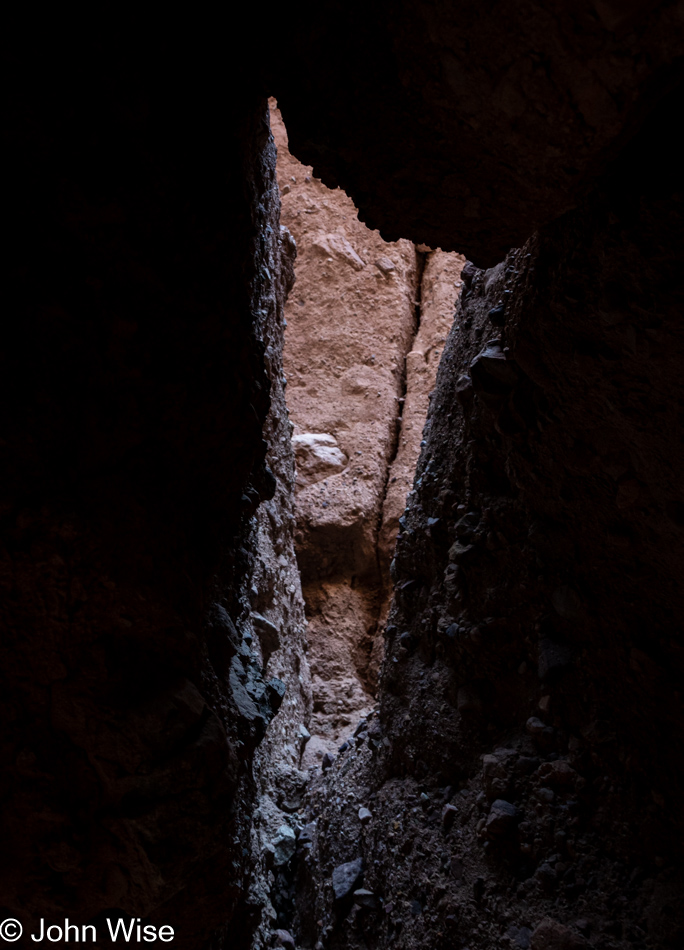
As a telescope acts as a portal through space into unknowns, so too does nature act as a portal into its history and maybe its future. As I peer into this crevice with light falling in from above, I can surmise what is out there, but I do not have first-hand knowledge. This mystery is the intrigue that helps propel our dreams.

From one space, we enter another by the simple act of going forward. Obviously, we had to have the means to be here, but I’d argue that everyone has that opportunity if they were to desire such things. The argument that most people can afford this if they own a relatively decent car could easily be taken issue with, but I’d say that while those more than 500 miles away would have to focus on something closer to where they live, such a weekend could cost as little as about $200. Without going into too many details, that’s about $120 for gas, $40 for two nights of camping, and park admission. As for food, that was going to be consumed at home regardless. Instead, people will convince themselves that a real immersive vacation must take place at Disneyland, Hawaii, Las Vegas, or on a cruise to the Bahamas. This all-or-nothing mentality is great for Caroline and me because we find ourselves all alone today at Room Canyon.

If you look closely at this image and the one above it, you’ll see that we’ve progressed about 100 feet up the trail. Sometimes, it’s not the broad vista, i.e., the big picture, that’s all important but the readjustment of your focus to see what you might miss if you are only honing your hyperopic vision.

Earlier this year, we spent a couple of hours in Kartchner Caverns, and in my subsequent writing about them, I deeply considered their formation and the molecular processes harnessed across time. Peering into those details in ways I hadn’t previously, I was enchanted watching in my mind’s eye the accretions forming to produce the cavern features we were there to experience. Today, we are here in an open-air canyon, and under an overhang are signs of accretions dripping down a wall. Where’s a geologist when you need one? How old might these be, what is their mineral composition, and how many other places in Death Valley can we find others?

Again, my kingdom for a geologist! While I understand that softer rock erodes faster than the overlying harder rock, I dream of knowing what was at work during those years these layers were forming. The greenish layers are making a sandwich of what appears to be sandstone, and within the green lower area, there is red rock, but it’s not evenly distributed, so what’s the story?

And then this small area of turquoise-hued rocks catches my eye and while I can appreciate the aesthetic qualities, I’m being denied any knowledge of precisely what’s at work here to have created this pocket of blue-green treasure. Learning that Death Valley has not really been a place to find much copper, I’ll eliminate the chance that the minerals at work here are malachite or azurite, which both oxidize towards green and instead, I’ll lean towards this display being caused by the presence of chlorite.

Hey Caroline, have we ever seen flowering desert rock nettle before? Looking for them, I learned that the International Carnivorous Plant Society considers the Eucnide urens a “murderous plant” because flies that come in for aphids are killed by the plant, but while this nettle strengthens its stinging spines with calcium phosphate, the same stuff our bones and teeth are made of, it can’t “eat” the flies so it does not qualify as carnivorous and is simply a murderer.

On the other hand, there’s this notch leaf scorpionweed that, while intensely and beautifully saturated in a wonderful shade of purple, can cause a rash similar to the effect of poison ivy. Please consider that I may be wrong about identifying this wildflower, just as I can be wrong about almost everything I write here.

After an exhaustive search, I’ve come to the conclusion that this is the gravel ghost flower.

The scale of my lack of knowledge is often frightening because it took until the day in Phoenix writing this post that I was able to answer the question of why I wasn’t able to find a single hint of fossils in all of the alluvia I was scouring for hints of life. While I wanted to believe that this was made of eroded materials that settled on the shore of the long-gone Lake Manley, I should have noticed that the rocks that have been cemented together do not show signs of water erosion. This debris arrived from high above where it broke off the surrounding mountains and collected at the foot of them. It should have been obvious that there would be no fossils in this type of alluvium. This feels like a gaping chasm in the basics of understanding how our planet was made, how it evolves, and how what we perceive shouldn’t be taken for granted.
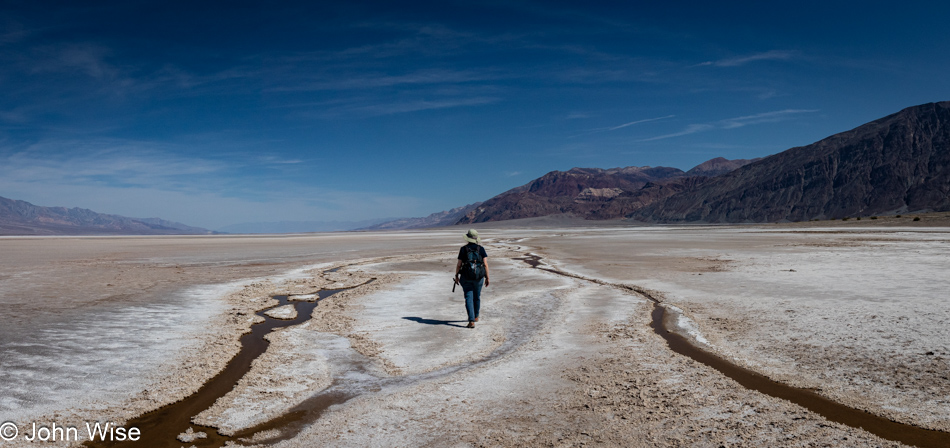
The world of John would certainly be rendered simpler if I were to drop the curiosity and join the modern clan/cult of “Veni, vidi, vici,” best exemplified in the digital age by posting an iconic photo to Instagram while sitting back to enjoy the influencer cred. Maybe you ask, what is this Latin phrase harkening back to Julius Caeser? “Veni, vidi, vici” is translated to, “I came, I saw, I conquered,” which has been reduced to, “I came because someone really cool also went; I saw what I had to see in order to take the same photo, I’m a winner because everyone else tells me I am.” Am I alone in thinking that my totem should read, “Odi profanum vulgus et arceo?”
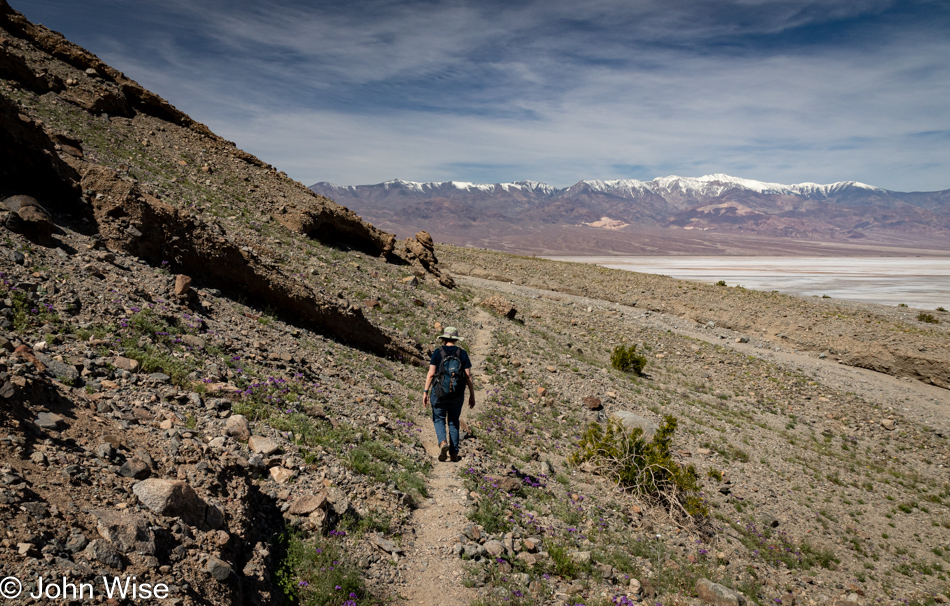
This is the moment we realize just how important AllTrails is to our peace of mind, as there are five potential trails that lead into Sidewinder Canyon, and only one can be right. A family of four coming off of one of these warns us from heading that way, so we consult our AllTrails map that we downloaded in Shoshone the night before to adjust our bearings. With nearly a dozen cars at the trailhead, we can only wonder how others made their decision.

From our initial impression, it would appear that the others are heading into places that are not Sidewinder Canyon. Should this prove true, we are promised a quiet 5-mile hike this afternoon.

It was a slog under direct sunlight in loose gravel before Caroline took up this perch in the shade of what appeared to be a fallen slab of the cliffside. After what felt like about 45 minutes, maybe even an hour, where we had 1,145 feet of elevation gain to contend with, there was serious consideration of turning around while we wondered what could possibly be so interesting further up the wide mouth of this gravelly canyon.

There were these occasional spectacular views of looking back at the snowcapped Telescope Peak in the Panamint Range, and as you can see, we are now able to enjoy a bit of shade as the canyon narrows.

When do the exciting views that make this such a highly recommended trail begin? Just kidding, if a massive rock overhang that could fall at any time to snuff us out of existence isn’t thrilling, what is?

We’ve reached the end of the trail as it relates to our skills of clambering up the rock faces behind us. While we could see the way up, the way back down might present other challenges for the overweight guy afraid of heights, so we’d just have to turn around, check out the side canyons, and call it quits here at Sidewinder Canyon.

On the way in, we skipped all four side canyons that branched off the main trail with the idea that we might do them on the way back down. This was the last one and is now the first one on our return. The only one marked with a cairn, there must be something special here, so, at a minimum, we’ll explore this short quarter-mile hike.

Right away, Sidewinder Canyon transformed into a gem, but at this time, we’d not yet seen a thing.
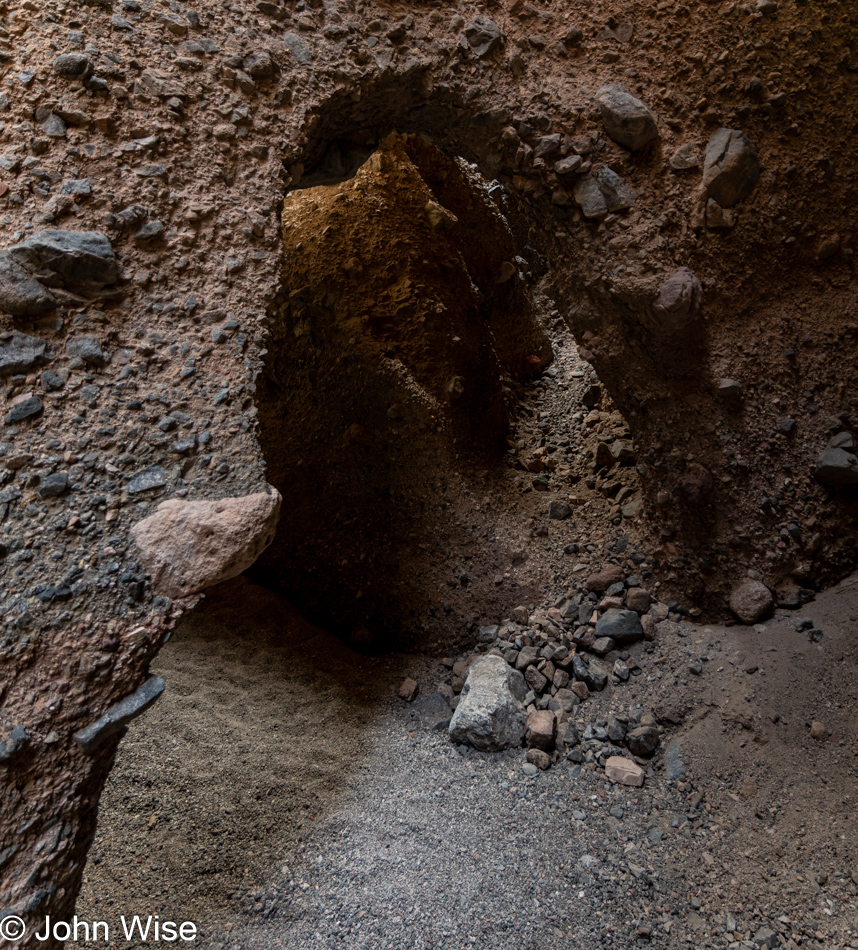
It is impossible to convey just how astonishing the sight of what you are looking at is. Not only did things cool off substantially in this narrow slot, but the light was at a premium, though there was just enough to understand that the hole we were about to walk through was a bizarre feature tucked away back here. We stood here a good 5 minutes examining things from all angles trying to figure out if it was manmade or carved by nature. There’s a steep path up and around it that Caroline braved, trying to gain a vantage point that might explain how this doorway got here. The surrounding rock and towering slice of earth overhead balanced over the opening suggest that it would have been stupidly foolish for any human to dare stand under so many tons of rock precariously resting in this space and dig it out, so it must be a natural path to the other side.

Step through the open door and look up; this is that view, which helps explain why it’s so dark down here.

The word that comes to mind regarding the state entered in this passage is stupefied. How does the hand of nature massage its contours to offer us a perfect world that not only supplies the essential ingredients to care for ourselves but then throws in a load of sensual aesthetic qualities that present our senses with an exquisite orchestration of visual, audible, and other sensory delights that dumbfound us as we stand there in awe? Incredulous that we’ve been gifted this ability to perceive such intense beauty, we are often brought to the edge of emotion that wants to find a way out in some way that far exceeds the exclamation of “wow!” Much of what I write here is a feeble attempt to capture the tiniest fragment of that enthusiasm that feels all too impossible to convey, and so I just keep on searching for the proper sequence of words that might talk back to us in the future and remind us that we’ve traversed the furthest reaches of the incredible that few will discover within or outside of themselves.

Charles Darwin once said, “The love of all living creatures is the most noble attribute of man.” I’d change that to include the love of all things, even those things we cannot overcome.

That large boulder was the end of this side canyon for us; we turned around and were able to enjoy it all over again.

Slot number two. See human for scale.

If you take nothing else from this post, leave knowing that these photos are poor representations of the breathtaking sights found here in Death Valley.
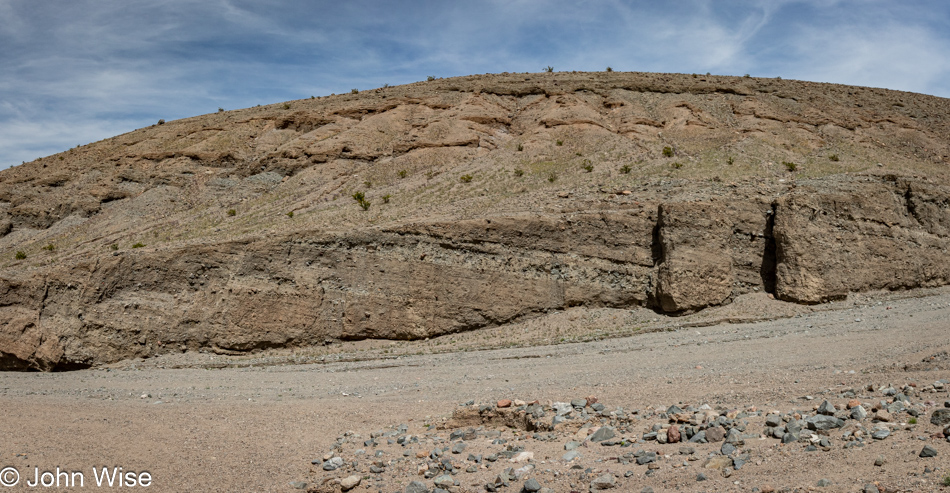
We have emerged from slot canyon number three in our sequence, and I’m left with the impression that hikers should consider visiting these in reverse order compared to what we chose, meaning visit each side hike as you are entering Sidewinder Canyon in order to save the best for last but then again, who am I to judge what is pleasing to others?

Let’s return to the subject of stamina as I now have 36 photos I’ve written to and have 16 ahead of me, including this one. Caroline often wonders why I don’t just slice the image count in half or even a third when the chore of writing to each and every photo means I’ll be spending an inordinate amount of time teasing thoughts out of my head, often longer than the actual time spent in an environment. You see, this is a clever ploy used by me to spend studied time in front of the photo waiting for some intrinsic value or grand inspiration to seep out of the pixels to talk to me about what I might share. Once I find that muse, er um, delusion, I run with it, and in so doing, I create the situation where my wife will have to then look into each bit of writing to ensure I’m coherent and grammatically correct, but there’s a side effect to writing so much, and that is she is then compelled to dwell within the scene allowing her memories to find a deeper place within our shared experience.

This entire process, no matter the motivation, requires the stamina to persist and, if need be, go slow to find my footing before establishing a flow that hopefully brings me to the end of the page without cutting out the remaining images before continuing with the next day. This is the third or fourth day of returning to this evolving post, and other than my wife reading this; I really have no expectation that anyone else will, other than some artificial life algorithm training another Large Language Model (LLM) so it can sample yet another human in order to learn how people express themselves. Like these wildflowers that must bloom in a hostile environment where nobody may ever happen by to appreciate their tenacity to persist, they pop into life for a brief time, grace us with their beauty, and could care less if they’re well received. Right there, that’s my writing philosophy.

Just to the right of the center of the image is our car, which will whisk us away to lunch if we don’t become distracted on the way up the road.
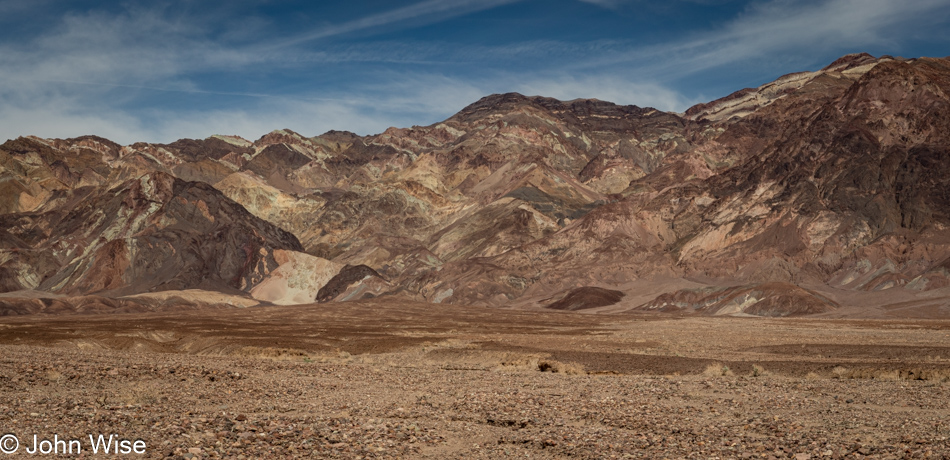
This is not Badwater, we didn’t bother to stop at Badwater on this visit to Death Valley because EVERYONE else was there. Never have we seen so many people and such a number of cars at that iconic location ever. It was an absurd level of visitors, as though Badwater had become an extension of a Disney ride. All we could do was crawl by with mouths agape wondering which influencer delivered the horde to this formerly serene place.
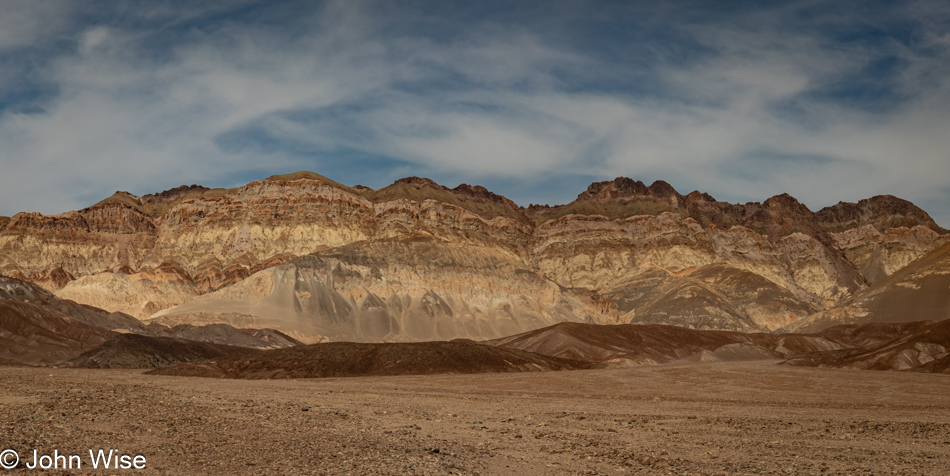
By the time we reached The Oasis and the Last Kind Words Saloon, our lunch options were pretty limited and, to be honest, as I was having no kind thoughts about the type of visitor the park attracts these days, I just wanted a quick bite so we could get back on a trail away from the grotesque superficiality on display here. Having a captive audience in Death Valley, the concessionaire puts us visitors in the bind of not having many options, and they are able to charge what the market will bear. We shared ten wings ($26), Caroline had a beer ($10), and I had an iced tea ($4). With tip, our bill for a shared appetizer and two drinks was $51. Not only that, our time at the saloon stole an hour from our day. Growing discouraged with our brief time here at the hub of Death Valley, we had one more thing to take care of, which was buying a new annual pass for our National Parks at the visitors center. Asking the ranger about the mayhem, we were advised to reconsider visiting on holiday weekends. This is Easter weekend, and there are still remnants of spring break filtering through. Now we know.
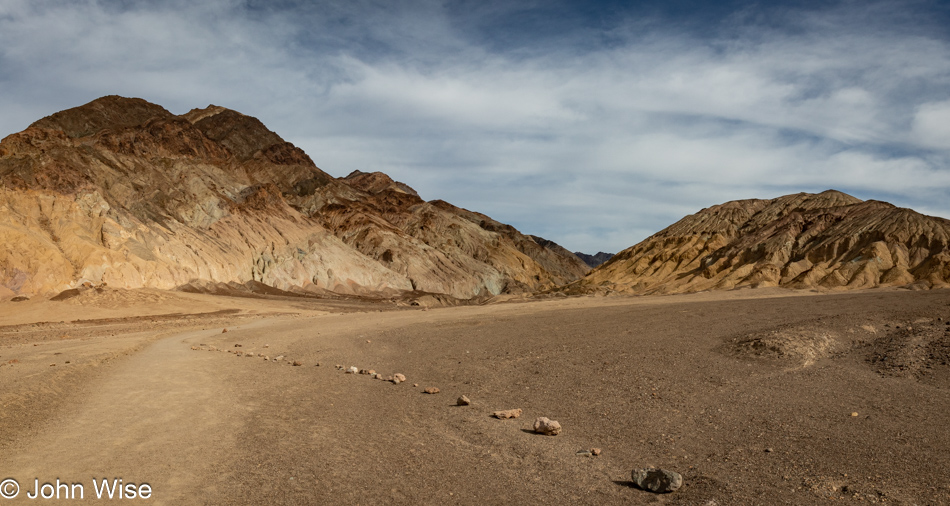
Time for a return to peace and quiet, which is exactly what one might expect at Desolation Canyon.
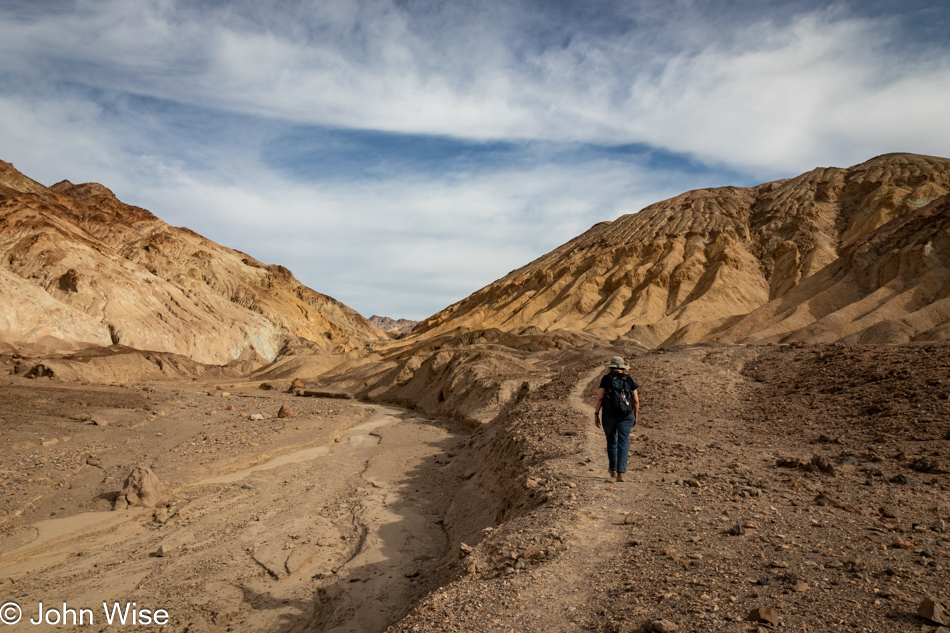
Who needs to check with AllTrails? The path very obviously goes that way.

There were some sketchy areas along the way for me, but as much as possible, I at least went as far as I could before my vertigo was either overcome or defeated, and we had to turn around. Things were going along more or less fine until I reached the point of ultimate pucker, where my butthole gland jolted me with a surge of anxiety that screamed a clear and resounding “nope!” It was at this point that we looked at the AllTrails map and saw that we were off the main route. How could this be, as the trail was so clearly defined?
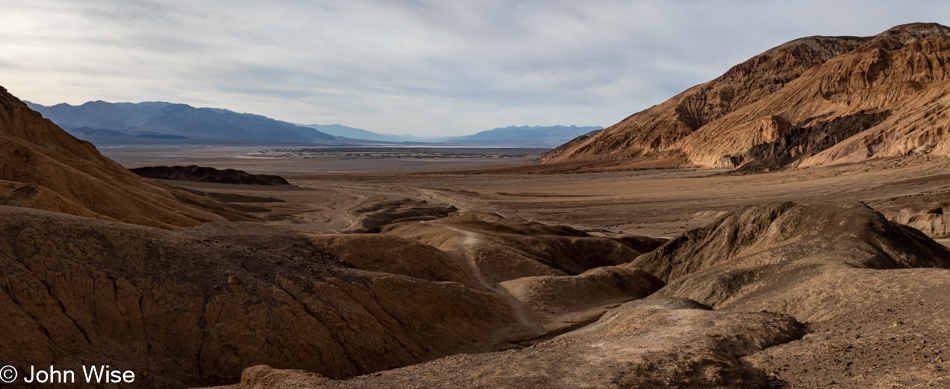
We’d already been hiking back when it occurred to me that I should have taken a photo from our furthest point up the pucker trail. Oh well, it’s early enough; we can try this again once we get back down there.
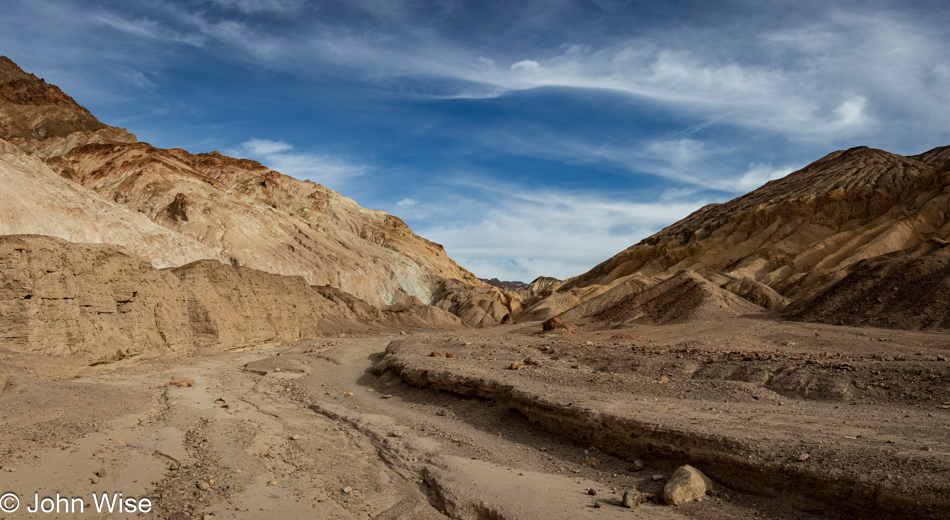
I see; we weren’t supposed to walk on the visible trail next to the wash; we were supposed to be in the middle of the wash.

We quickly learned why this canyon earned its name: this is absolute desolation. Not a single plant, lizard, or bit of moisture though we did hear the occasional bird tweeting from above. Then there was also that guy who was on his descent from a nearby peak because he has the kind of hooves that allow his species to ascend escarpments and was now racing to reach Dante’s View at Coffin Peak before sunset after he whipped out his wings.

It’s intensely beautiful down here, but the sun is not in our favor, and like just about anywhere on the trails in Death Valley, we wouldn’t want to be out here after the sun sets, so we keep on moving, not taking the time we should in order to take it all in.

There was another dead end ahead for us before finishing the Desolation Canyon Trail, a rock face with obvious hand and foot holds but purely vertical and something that I wouldn’t have been happy needing to come down. Mind you; this is certainly a disappointment for me as I, like any normal person who’s already invested the effort in getting out here, want to reach the end of the trail for that sense of winning a prize for reaching the end of the trail. Alas, this isn’t meant to be my way of winning; I’ll have to accept that by being forced out of this canyon earlier than expected, we were able to do other amazing things that were meaningful, too. Those details follow.
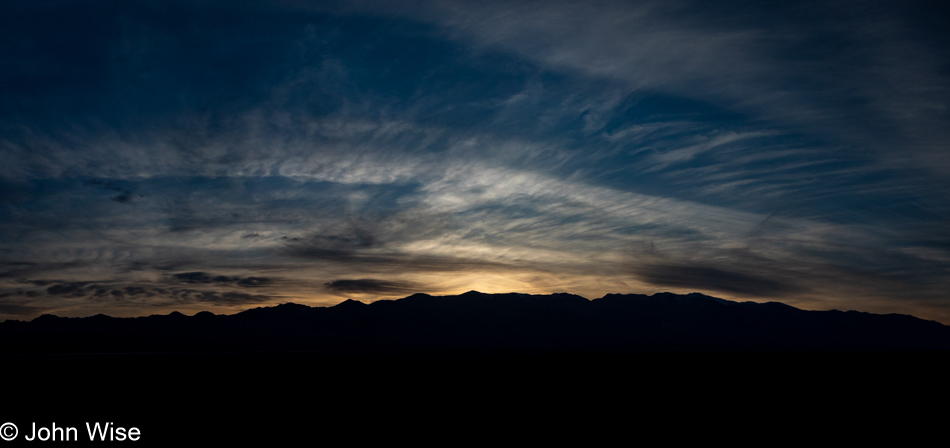
It feels like a rare moment when we are afforded the opportunity to experience a glorious sunset here in Death Valley. I don’t know why we can’t find any memories of sunsets in the park; maybe it’s due to being overwhelmed by the sites of the day or that they simply can’t compare to the spectacular sunsets we witness in Arizona, regardless of the reason, today, we were gifted with this late burst of color in the early evening sky that bore remembering.
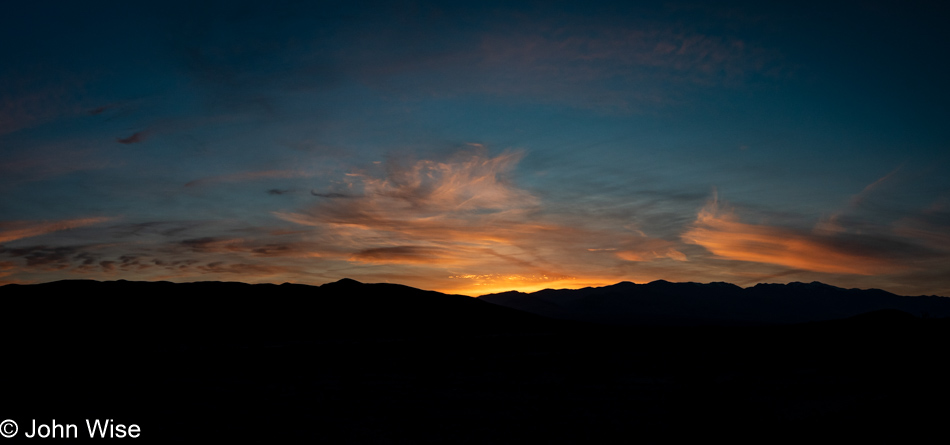
From where we left the trail, the nearly 70-mile drive down to Shoshone was going to take us nearly 90 minutes, getting us to dinner shortly before 8:00, but here we were stopping yet again. There’s no question in our minds that whatever might be sacrificed later is just the way it is because capturing yet another reminder of a perfect day takes precedence.
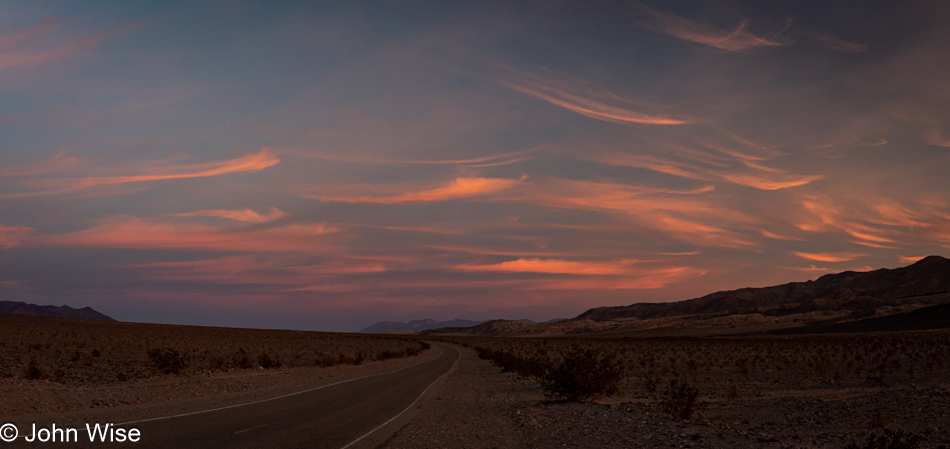
Nearly 15 miles covered by 32,000 steps on three different hikes is what we got in today. Starting with Room Canyon, moving on to Sidewinder Canyon with a quick jaunt out onto the salt flat in-between before finishing the day on the Desolation Canyon trail. When we pulled into our motel, we figured it was too late to hit the hot spring, so we went for dinner at the Crow Bar across the street and talked of taking a dip in the morning before the day got underway, but as luck would have it, we got our order in before a large (loud) party of Germans and before we knew it, it looked as though we could clear our bill and get to our room to change by 8:40 allowing us almost 15 minutes at the pool. We wasted no time and were in the water by 8:45. The gate is supposed to be locked at 9:00, but as luck was once more favoring us, the guy didn’t show up until some minutes after 9:00 allowing us a full 20 minutes of hot spring winddown for our tired bodies and heavy feet. This was just the elixir nature ordered for this couple of outdoor enthusiasts who were celebrating their stamina to be on the go and enjoying every moment of a day that stretched into a 15-hour adventure of non-stop sublime impressions.
